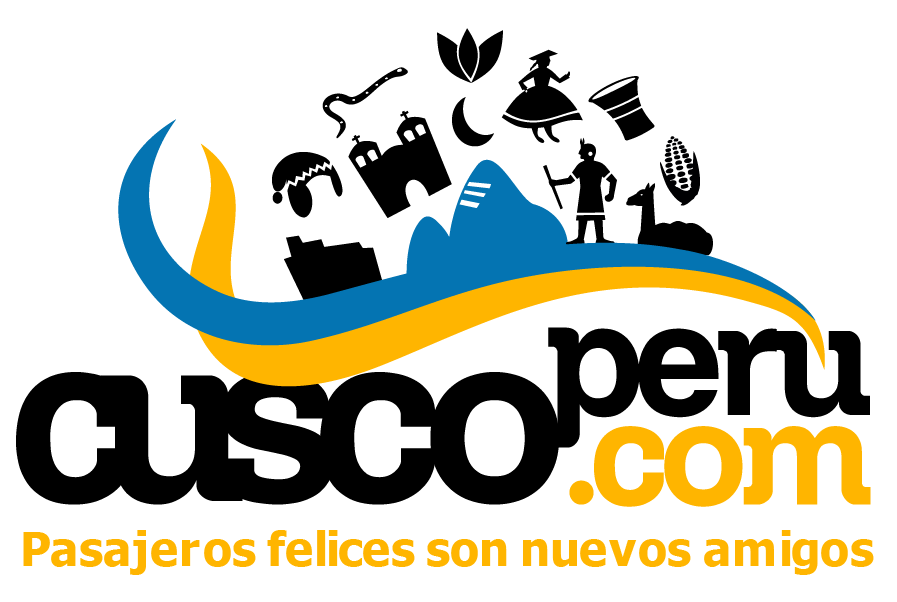

Tambomachay - Inca´s Baths
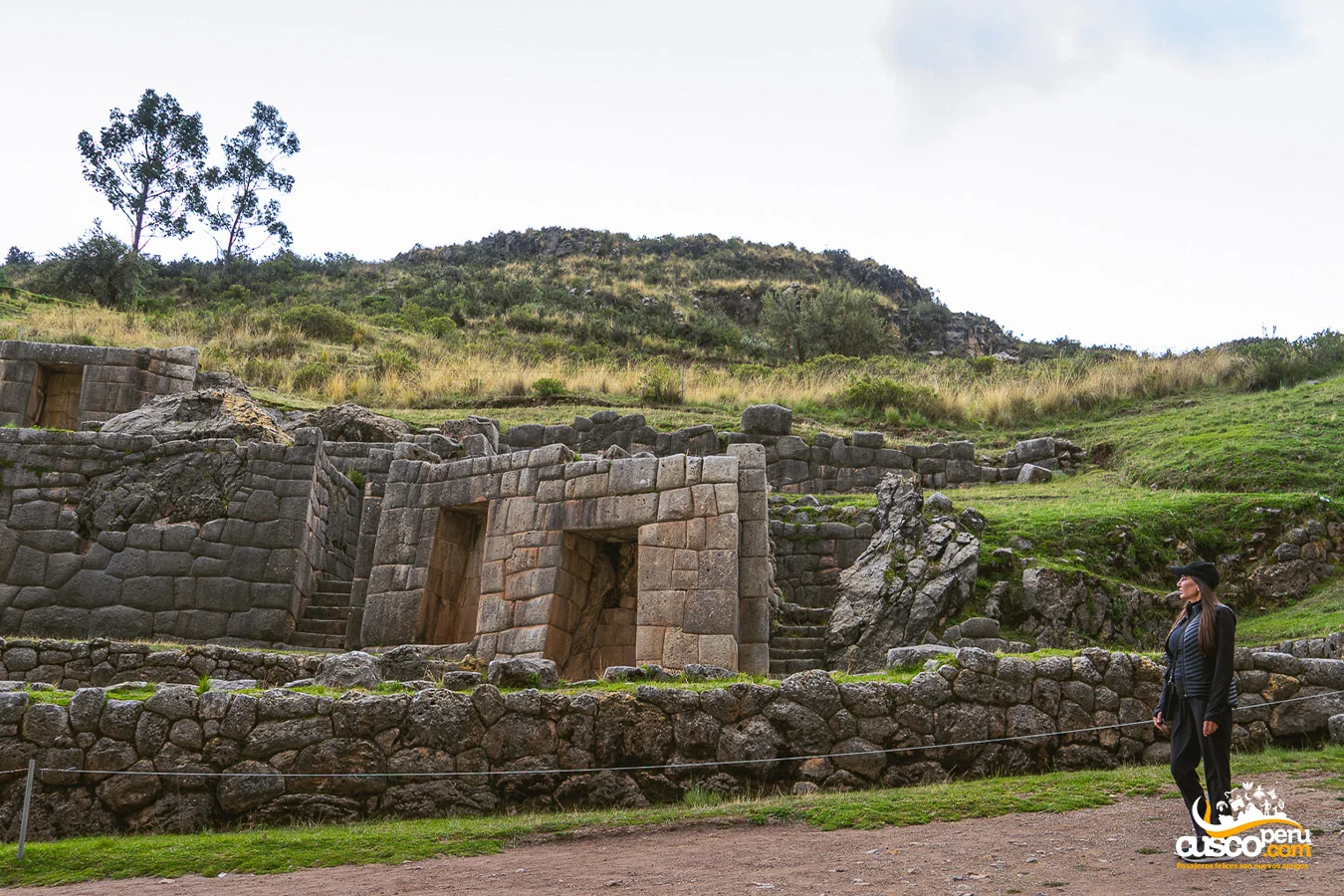
The archaeological site of Tambomachay was a place dedicated to the water worship and as a resting place for the Inca nobility. Today, this archaeological site continues to impress all visitors with its complex hydraulic engineering.
The location has an approximate extension of half a hectare and the material used for its construction was limestone with polygonal style masonry. Tradition knows this monument as " The Bath of the Ñusta " due to the existence of two aqueducts that carry crystal clear water all year round.
- 1. What does Tambomachay mean?
- 2.1. Where does the water of Tambomachay come from?
- 3.1. Inca Baths
- 4. Location
- 5.1. Opening Hours
- 5.3. Climate
- 5.4. How to get to Tambomachay?

What does Tambomachay mean?
The name it receives does not have an exact definition, but it is believed to come from two Quechua words: "Tampu" which means lodging and "Mach'ay" which is rest. However, other translations indicate that "Mach'ay" means caves.
Water worship in Tambomachay
In the Andean worldview, water was the origin of life , turning this resource into one of their main deities. For this reason, special importance was given to water worship in all Inca constructions.
Tambomachay has liturgical fountains carved in stone and feed an extensive network of channels that provided water to the nearby archaeological enclosures.
Water worship is present in every Inca enclosure , represented as water channels in which the flow of it is continuous.
Where does the water of Tambomachay come from?
This archaeological center was built over a river and springs, although it is still not exactly known where the flowing water comes from. The slope allows water to run through all the channels, which despite having passed more than 600 years, continue to flow.
Attractions
There is no doubt that all archaeological sites offer a different view of the Inca culture, in this case, Tambomachay shows us the importance that water had in the Inca era.
Tambomachay was not greatly damaged in the era of Spanish colonization, that is why the complex is one of the best preserved, located near the city of Cusco.
Tambomachay is an important example of the hydraulic engineering that the Incas possessed, since the precinct has water channels made of carved stone in which water flows all year round.
This water flows to a platform that functioned as a liturgical fountain and, presumably, the Inca baths.
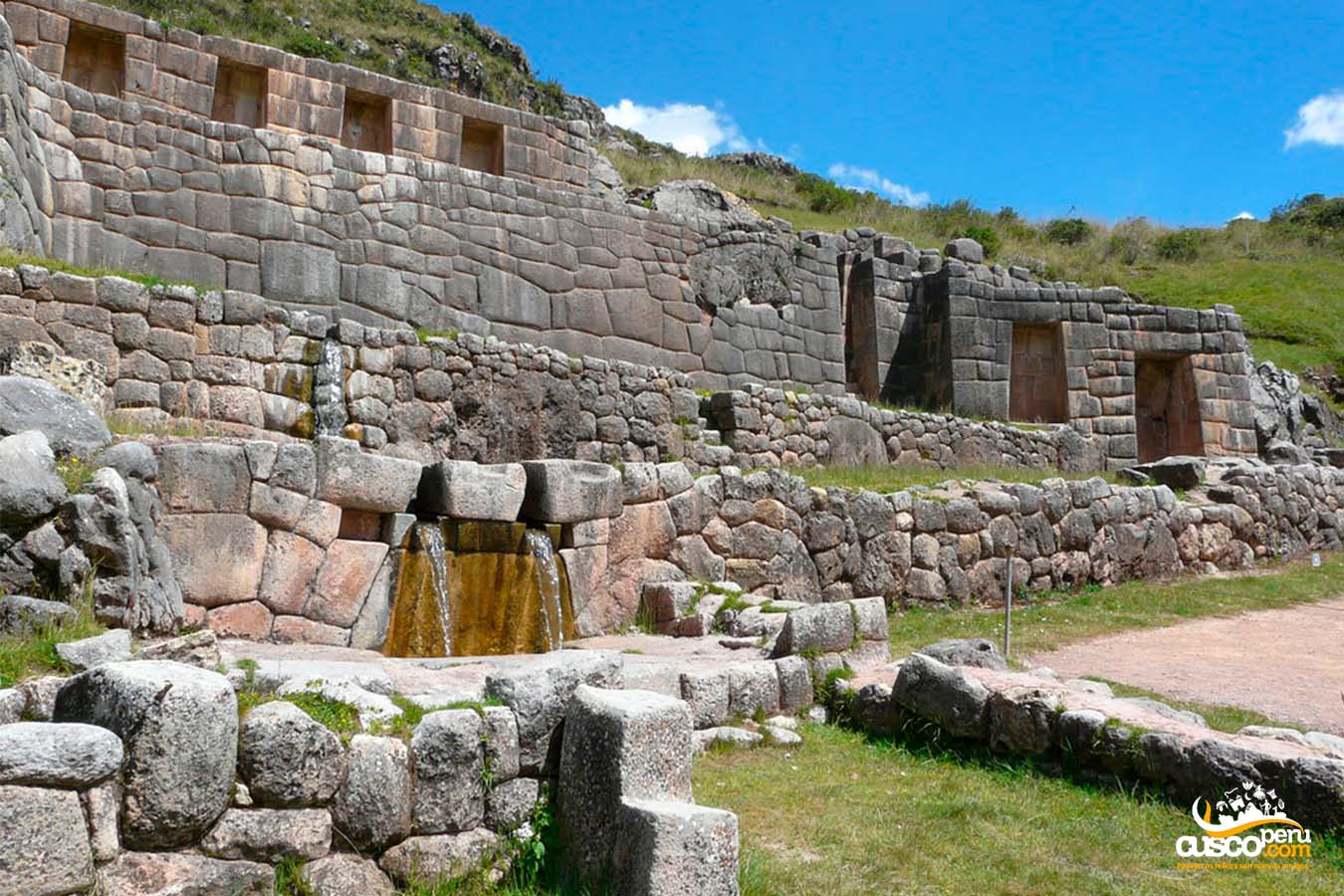
Tambomachay is located 5 kilometers from the city of Cusco and 0.6 kilometers from Puca Pucara, an archaeological site with which it is closely related. It is on the Cusco-Pisac road.
General Information
Opening hours.
Monday to Sunday from 08:00 am to 05:30 pm.
Entrance to Tambomachay is included in the Tourist Ticket.
- Tourist Ticket Cusco for Foreign Tourist: S/. 130.00 (Approx. USD 36) allows entry to 16 tourist sites, valid for 10 days.
- Tourist Ticket Cusco for National Tourist: S/. 70.00 (Approx. USD 20) allows entry to 16 tourist sites, valid for 10 days.
The climate at Tambomachay corresponds to the climate of the city of Cusco, which is generally dry and temperate . However, it is recommended to visit this place in the afternoons, when the temperature is not so high, and you can appreciate why it is named so.
How to get to Tambomachay?
Getting to Tambomachay is very simple, and it offers different options:
- Public transportation: This option is the most economical for those looking to save money. First, go to the "Rosaspata" stop where the "Huerto" transport company passes, which will take you to the Tambomachay complex in a journey of no more than 30 minutes. You can ask the transport staff for help; they will gladly assist you.
- By taxi: The taxi service is a very convenient option if you want to get there quickly, the service should not cost more than 30 soles, and the trip takes no more than 20 minutes.
- Tourist bus: This option can be found in the city center, and it not only allows you to visit Tambomachay but also other nearby archaeological sites, such as Sacsayhuaman, Q'enqo, and Puca Pucara.
- Guided tour: Most tours offered include a visit to the archaeological complex of Tambomachay. Therefore, this is the best option for your visit, plus you will be accompanied by a guide who will explain in detail the history of this magical place.
Image Gallery
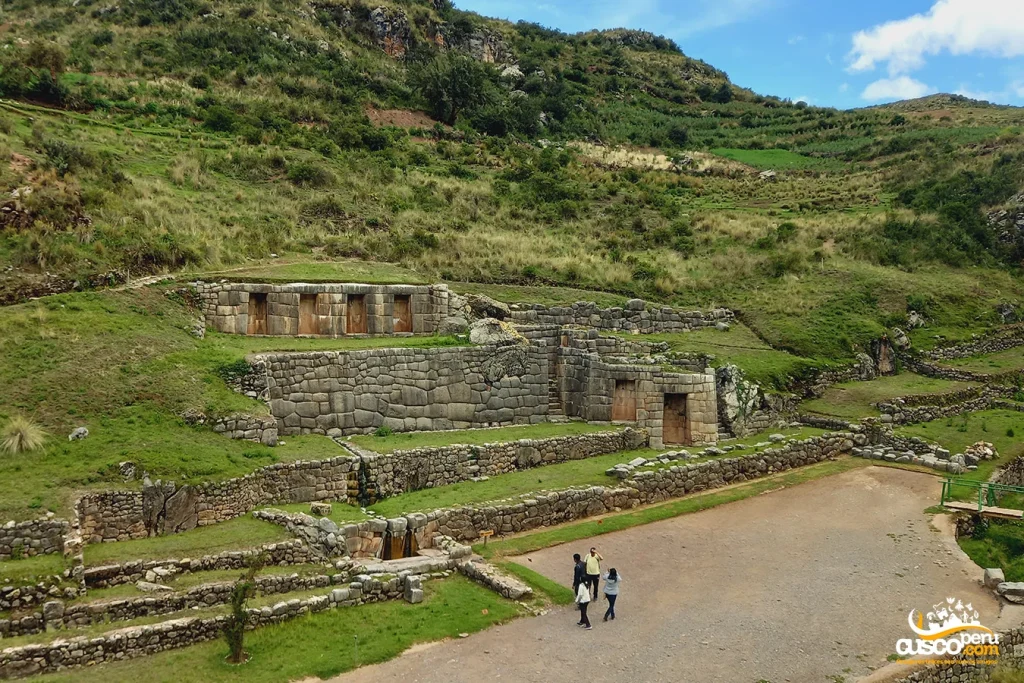
Happy passengers

- Machu Picchu Tours
- Salkantay SKY Trek 4 Days
- Salkantay SKY Trek 5 days
- Salkantay Trek Combined 7 days
- Choquequirao Hike 4 days
- Lares Valley Trek to Machu Picchu 4 days
- Inca Jungle Trek to Machu Picchu 4 days
- Rainbow Mountain Peru day trip
- Humantay Lake Hike (Full Day)
Tambomachay Archaeological Site

The Tambomachay Archaeological Complex, known as the ‘Bath of the Inca,’ is a historic and cultural site known for its impressive stone constructions, including aqueducts, channels, and water fountains.
The complex consists of several structures, the most prominent being a series of terraces that resemble a waterfall. In addition to the terraces, Tambomachay features a network of canals and aqueducts that transported water from the mountains to the complex. These channels showcase the impressive Incan hydraulic engineering as they still function today, providing water to the complex’s fountains.
Today, the Tambomachay Archaeological Complex is a significant tourist destination in the Cusco region. Visitors can explore the ancient structures, walk along the trails surrounding the complex, and enjoy panoramic views of the surroundings. Additionally, guided tours are available to learn more about the history and culture of the Incas.
History of Tambomachay
The history of Tambomachay dates back to the time of the Inca Empire in ancient Peru. This archaeological site has been identified as a ceremonial place of great importance for the Incas. It is believed to have been used as a sacred site for purification rituals and the veneration of water, considered sacred by Incan culture.
Its distinctive architecture, composed of finely carved walls and functional water channels, reflects the technical skill of the Incas in engineering. Furthermore, its strategic location near Cusco indicates its potential connection to the Incan road system and its significance as a stop on ceremonial or pilgrimage routes.
Despite the passage of time and historical events, Tambomachay has retained its mystique and remains a fascinating destination for visitors interested in exploring the rich history and sophisticated engineering of the Incan civilization.
Location of Tambomachay
The Tambomachay archaeological site is located in the Cusco region of Peru. It sits approximately 8 kilometers north of the city of Cusco, on the slope of a hill at an altitude of around 3,700 meters above sea level.
How to Get to Tambomachay?
To reach the Tambomachay archaeological site, there are several transportation options. The most common and convenient way is to take a taxi from the city of Cusco, as it is only 8 kilometers away.
If you prefer a more economical option, you can also take a public bus from the Rosaspata market in Cusco. Buses heading towards the Sacred Valley of the Incas often pass by Tambomachay, so you just need to inform the driver that you want to get off at that point.
Another option is to book a guided tour that includes a visit to Tambomachay. Many travel agencies in Cusco offer this service, usually including transportation to and from the archaeological site, as well as specialized guidance during the visit.
What to See and Do in Tambomachay?
The Tambomachay archaeological site is a fascinating place that offers visitors the opportunity to explore the rich history and culture of the region.
One of the main attractions of Tambomachay is its aqueduct system and water fountains. The site features a series of channels and waterfalls that still function, showcasing the advanced Incan engineering in water management. Visitors can admire the water fountains and marvel at the precision with which they were built. In addition to the water fountains, Tambomachay has a series of impressive architectural structures. Among them is a bath complex believed to have been used for purification rituals. These baths are built with finely carved stones and feature functional water channels. Visitors can walk through the baths and appreciate the beauty and precision of their construction.
Another interesting feature of Tambomachay is its strategic location in the landscape. The site is surrounded by mountains and offers breathtaking panoramic views of the surroundings. Visitors can enjoy hikes along the trails surrounding the site and explore the natural beauty of the area.
In addition to its archaeological significance, Tambomachay is also a sacred place for locals. Many believe that the flowing water in the site has healing properties and spiritual purification. As a result, the site attracts many visitors seeking to experience the energy and tranquility said to emanate from it.
Operating Hours and Entrance Fee at Tambomachay
Tambomachay is open from Monday to Sunday, from 8:00 a.m. to 6:00 p.m. During these hours, visitors have the opportunity to explore and marvel at the Incan structures on-site.
Regarding the entrance fee, it’s important to mention that there’s a differentiated rate for national and foreign tourists. Peruvian citizens and residents in the country have a reduced entry fee, while foreign visitors must pay a slightly higher fee.
It is advisable to wear comfortable footwear and bring water, as visiting Tambomachay involves walking on trails and stairs. Additionally, it’s recommended to hire the services of a tour guide for a more enriching experience and to learn about the history and culture of the Incas.
- Archaeological Sites
- Sacsayhuaman
- Puka Pukara
- Tambomachay
- Ollantaytambo
- Choquequirao
Most Popular Packages
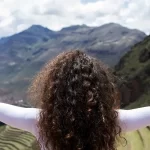
Colonial Lima and Sacred land of the Incas 7 days
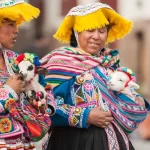
Spectacular Peru 10 days
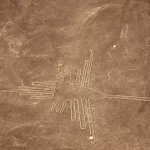
Origins of the Incas 10 days
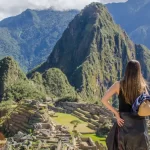
Classic Machu Picchu 5 days
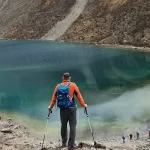
Machu Picchu Challenge 8 days
Check out our cusco tours.
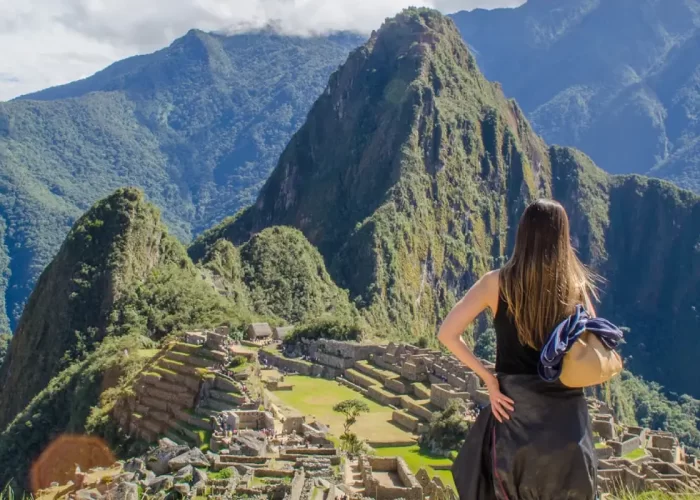
Cusco Accommodation included Transfers included Tourist train Activities and excursions Breakfast included Daily departures
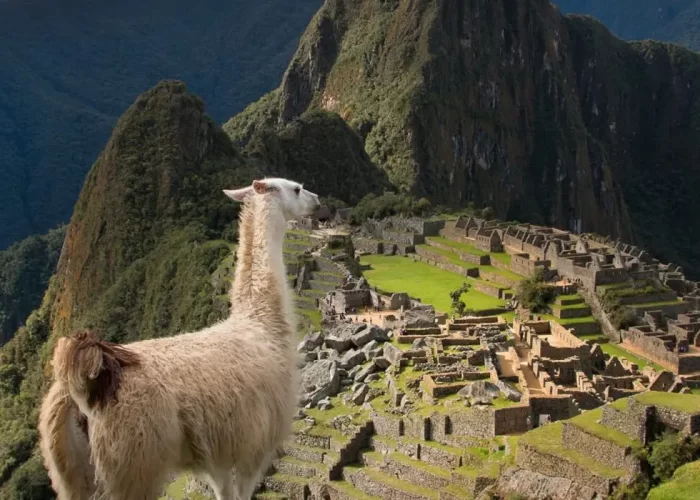
Machu Picchu + Humantay Lake 6 days
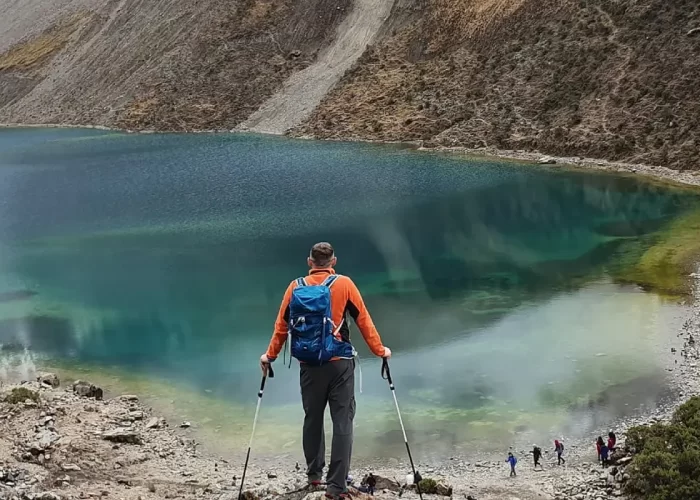
- Skip to primary navigation
- Skip to main content
- Skip to footer
Tambomachay
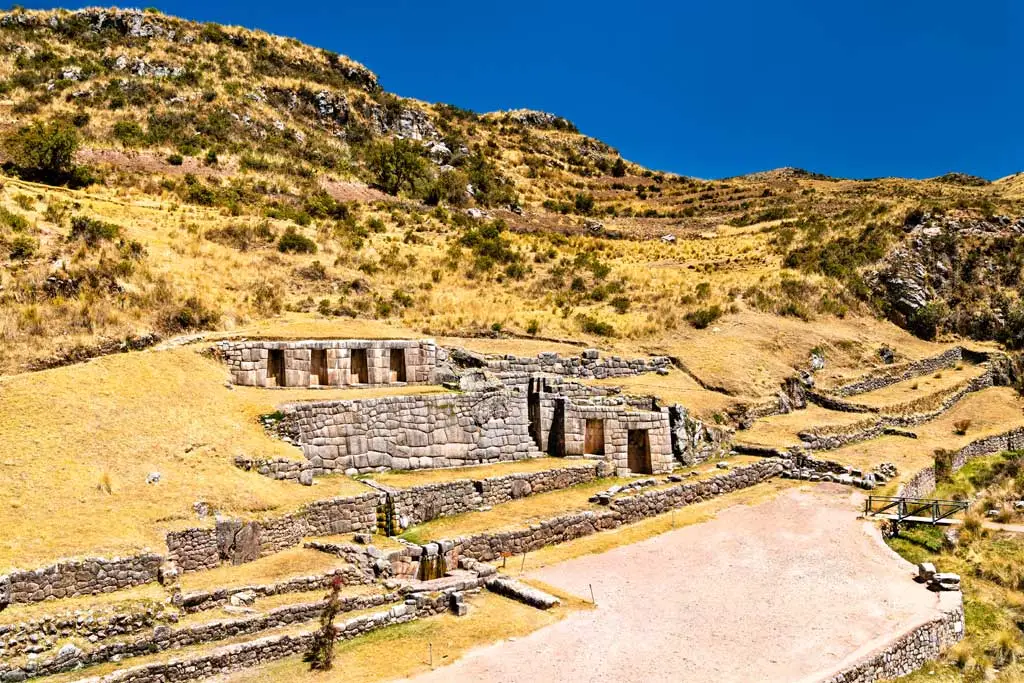
According to chroniclers, the name Tambomachay combines two Quechua words: Tampu (collective accommodation) and Mach’ay (resting place or caverns). These stone structures were naturally formed by the waterways coming from nearby wells and thermal springs.
Alternately known as El Baño del Inca in Spanish, Tambomachay is an intriguing site because its exact purpose remains unknown. Though some historians speculate that it might have been a ceremonial site or a spa resort for Inca royalty and political elite, others theorize it to have been a military outpost. It was probably a combination of all three.
Nevertheless, this site holds up its archaeological wonders showcased in the aqueducts, canals, and waterfalls running through its terraced rocks. Located about 6.4 kilometers north of Cusco, Tambomachay is perched on a hill 3,700 meters above sea level and is composed of three-stepped terraces highlighting the precision of Inca stonework.
Large boulders, without the use of mortar, were fit together in a way that made them resistant to earthquakes for centuries. Trapezoid niches were built into the retaining wall, and the whole structure fed into a natural spring that waters the built-in aqueducts, canals, and waterfalls.
These sophisticated water-centric structures are still functional and their engineering testifies to the Inca’s advanced understanding of hydraulics and incorporating them into their water worship ceremonies.
Right in front of the enclosures comprising Tambochay, stands the remains of a tower that was naturally built on a rock, serving as an excellent vantage point, a fact that fueled the theory that Tambochay was also a military outpost.
Tambomachay is close to other notable Inca sites like Sacsayhuamán, Q’enqo, and Puka Pukara, facilitating a smooth tour from one archaeological site to another.
About 800 meters away from the site are hot springs with medicinal properties where you can take a dip.
The Tambomachay archaeological complex lies between hills covered with “Ichu,” a type of grass endemic to the region. Beautiful flowers also appear during certain seasons.
How to Get to Tambomachay
There are three transportation options to get to Tambomachay:
- a 45-minute taxi ride
- public transportation/bus
- advanced booking with a tour operator
Note: If you have not booked a tour with Tambomachay as a destination, be sure you have the Boleto Turístico Cusco that gives access to Tambomachay aside from other archaeological sites.
Local Professionals
Useful tools, help & info.
Please consider a small donations to support orphans, Quechua communities, locals in need and sustainable tourism.
- Legal Information
- Payment Methods
- Social Projects
- Cusco City Tour (Half Day)
- Classic Sacred Valley Tour (Full Day)
- Complete Sacred Valley Tour (Full Day)
- Maras Moray Tour (Half Day)
- Maras Moray Bike Tour (Half Day)
- ATV Maras Moray (Half Day)
- Rainbow Mountain Trek (Vinicunca – Full Day)
- Rainbow Mountain Tour (Palccoyo – Full Day)
- Humantay Lake (Day Trip)
- Qeswachaka Bridge Tour (Full Day)
- South Valley Cusco Tour (Half Day)
- Machu Picchu Day Trip from Cusco (By Train)
- Machu Picchu By Train (Two Days)
- Sacred Valley Connection to Machu Picchu (2 Days)
- Machu Picchu Huayna Picchu Tour (2 Days)
- Machu Picchu Sunrise Tour (2 Days)
- Machu Picchu Luxury Tour (2 Days)
- Lake Titicaca Tour (2 Days)
- Huacachina and Paracas Tour (Full Day)
- Huacachina Tour (2 Days)
- Machu Picchu Tour from Lima (2 Days)
- Machu Picchu Tours from Lima (3 Days)
- Machu Picchu Tours from Lima (4 Days)
- 7 Lakes Ausangate Hike (Full Day)
- Ausangate Trek (5 Days)
- Cachicata Trek (Full Day)
- Choquequirao Trek (4 Days)
- Inca Trail to Machu Picchu (Full Day)
- Short Inca Trail (2 Days)
- Inca Trail to Machu Picchu (4 Days)
- Inca Trail Hike (5 Days)
- Humantay Lake and Salkantay Trek (2 Days)
- Salkantay Trek to Machu Picchu (4 Days)
- Salkantay Trek to Machu Picchu (5 Days)
- Salkantay Inca Trail Trek (7 Days)
- Lares Trek (4 Days)
- Huchuy Qosqo Trek (2 Days)
- Huchuy Qosqo Trek (3 Days)
- Rainbow Mountain + 7 Lakes Hike (2 Days)
- Cusco to Machu Picchu Tour Package (5 Days)
- Cusco Vacation Package (8 Days)
- Cusco Machu Picchu Puno Tour (8 Days)
- Sacred Valley Inca Trail Package (8 Days)
- South Peru Adventure Tours (10 Days)
- Everything You Need to Know about Visiting Tambomachay, Peru
Perched 3,700 meters atop the Sacred Valley of the Inca, Peru, Tambomachay remains one of the most popular archaeological sites near Cusco. Initially a place dedicated to water worship and the Inca nobility resting place, this site continues to entice visitors with its complex architecture of aqueduct system.
Planning to visit this magnificent architectural and engineering mastery? Let’s explore Tambomachay with us and discover everything you need to know about it!
What Does Tambomachay Mean?
Tambomachay is derived from the Quechua language, with “Tampu” signifying “lodging,” while “Mach’ay” evokes “place”. When combined, they mean “place of resting”. However, “cave” is also another interpretation of “Mach’ay”, which pictures the environmental condition surrounding the site.
Water Worship in Tambomachay

In the Andean culture, water plays an important role; it was the origin of life. Hence, this site is closely linked to water worship, highlighting the Inca’s profound respect for nature.
The site features an intricate network of aqueducts and waterfalls, which were likely used in rituals that honored water as the main element. These ceremonies were important in Inca culture, recognizing water’s crucial role in agriculture and sustaining life with its continuous flow.
Where Does the Water of Tambomachay Come From?
The water at Tambomachay originates from natural rivers and springs located in the nearby mountains. This water has been skillfully channeled through a series of aqueducts to supply the site’s fountains and baths since more than 600 years ago.
The exact source of these springs remains unknown, but the consistent flow of water, even during dry periods and until now, demonstrates the Inca’s remarkable engineering capabilities.
Tambomachay History

Tambomachay, located near Cusco, Peru, is a significant Inca site built likely during Pachacuti Inca Yupanqui ‘s reign. It was occupied by the royal panacas of Hanan Qosqo and was the residence of Inca Yupanqui, who used the area for hunting. The site also houses the ninth huaca of the first ceque of the Antisuyo.
Historical chronicles from the 17th century describe this site as a site of great importance, sometimes referred to as a castle or as “walls from the time of the Inca”, linking it to the nearby archaeological site of Puca Pucara.
However, during the colonial and republican eras, this site underwent significant changes. The area was converted into private property for livestock production, managed by a landowner named Mendoza, who was originally from Puno . This transition marks a stark contrast between its revered status in Inca times and its later use during colonization.
Tambomachay Today
Today, as a part of the larger Sacsayhuaman archaeological park, Tambomachay remains one of the most iconic Inca monuments.
It is well-known for its sophisticated hydraulic system, which still functions today. This sacred place attracts hundreds of visitors each year, offering a glimpse into the Inca’s advanced engineering and spiritual water practices.
Important Legends
There is an infamous legend at Tambomachay: the legend of Inca Yupanqui.
According to legend, Inca Yupanqui often sought refuge at Tambomachay, a serene retreat reserved exclusively for the Inca and his close entourage.
Known for its stunning natural beauty and intricate water systems, Tambomachay served as a place of rest during Yupanqui’s hunting expeditions and a site for both ceremonial and leisure activities.
A particularly intriguing legend associated with Tambomachay involves its mystical waters. It is believed that if a woman drinks from the waters on the right side of the waterfall, she is more likely to conceive a male child while drinking from the left side is said to increase the chances of having a female child.
This legend underscores the Incas’ profound spiritual connection to the natural world, attributing special powers to the waters of their sacred sites.
What to See at Tambomachay Ruins?

This site is home to meticulously carved architecture, allowing visitors to enjoy a series of structures from Inca baths to the terrace.
Inca baths, a series of skillfully carved stone structures that channel water from nearby springs, are the main stars. These baths were likely used by Inca royalty for ritual cleansing and relaxation, reflecting the Inca’s sophisticated understanding of water management.
The Water Sources
Water is sourced from natural springs in the surrounding mountains and directed through a complex system of fountains and two aqueducts.
These water features were considered sacred and played a crucial role in the site’s religious and ceremonial functions. The continuous flow of water all year round demonstrates the Incas’ deep expertise in hydrology and their ability to integrate natural elements into their spiritual practices.
The Pucara or Ushnu
Pucara or Ushnu is a ceremonial platform used by the Inca for important rituals.
The name “pucará,” or watchtower, may imply that this place could have been used as an observation point. In addition, “ushnu” served as a space for offerings and religious ceremonies. This signifies the duality of the site.
The paths at Tambomachay are part of the extensive Inca road network of Tahuatinsuyo, linking this site to other key locations like the nearby Sacsayhuaman to Puca Pucara. These ancient trails facilitated the movement of the Inca people, goods, and information throughout the Inca Empire.
Today, visitors can explore these well-preserved paths, walking the same routes that once connected the Inca with their expansive empire.
The Terraces
Tambomachay’s terraces are a significant aspect of its architectural design, serving both agricultural and ceremonial purposes. These stepped platforms were used for farming, making efficient use of the mountainous terrain, and as stages for important rituals.
Additionally, the terraces played a vital role in stabilizing the slopes and preventing erosion, showcasing the Inca’s ability to adapt their construction techniques to the rugged Andean environment.
Want to check out Tambomachay on a guided tour ? Contact us to learn more today!
Flora and Fauna at Tambomachay
The Tambomachay area features various plant species, including Roque (Coletia spinosissima), Queñua (Polylepis), and Huayruro cusqueño (Cytharexylum herrerae), along with grasses like paja brava (Stipa ichu). These plants provide insight into the unique high Andean ecosystems.
Similarly, its fauna is also diverse, with notable species such as the elusive oscollo (Oncifelis colocolo), the graceful deer (Odocoileus virginianus), and the resourceful fox (Pseudalopex culpaeus).
Where is Tambomachay
Tambomachay is located near Cusco, Peru—approximately 8 km (16 mins) away from the Cusco city center.
Tambomachay Altitude
Tambomachay sits at an altitude of about 3,700 meters (12,140 feet) above sea level, characteristic of the Andean region near Cusco.
This high elevation offers breathtaking views of the surrounding mountains while demonstrating the Inca civilization’s ability to adapt and thrive in such rugged and challenging terrain.
Tambomachay’s weather is cool and mild, typical of its high altitude. The region has a summer from December to March, when frequent showers make the trails slippery, and winter from June to September, which is the dry season. In this season, you will find clear skies and pleasant temperatures.
Best Time to Visit Tambomachay

If you’re looking for the best time to visit Tambomachay, the answer is during the dry season, from June to September. This period offers clear, sunny weather and pleasant temperatures, which is ideal for exploring the site and enjoying the views without the risk of rain.
General Information
Opening hours.
The site is open from Monday to Sunday from 07:00 am-05:30 pm.
Entrance to Tambomachay is included in the Tourist Ticket.
- Foreign tourists: S/. 130.00 (approx. USD 36).
- National tourists: S/. 70.00 (approx. USD 20).
These tickets grant access to 16 sites and are valid for 10 days.
How to Get to Tambomachay?
Here are several ways to get to Tambomachay:
- Public Transport : The most economical option is to take the “Huerto” bus from the Rosaspata stop in Cusco. The journey will me around 30 minutes.
- Taxi : A quick 20-minute ride from downtown Cusco, costing about 30 soles.
- Tourist Bus : These buses from the city center also visit nearby sites like Sacsayhuaman and Puca Pucara.
- Guided Tour : Includes transportation and a guide, offering detailed insights into Tambomachay and other nearby attractions.
- Car or Bicycle : Drive or bike the 8 km from Cusco, enjoying a flexible and scenic route.
Archaeological Sites You Can Visit Near Tambomachay
Sacsayhuaman.
This is a monumental fortress renowned for its incredible stone construction and significant role in Inca history. It’s a must-see site close to Cusco—only 2 km away from the Plaza de Armas.
Qenqo is an intriguing complex featuring carved rock formations thought to have been used for religious ceremonies, with winding labyrinths and hidden chambers. It is situated approximately 3 km northeast of Cusco in the T’occocachi neigborhood.
Puca Pucara
Only 1 km from Tambomachay lies the Puca Pucara, a small fortress that once served as a military outpost and administrative hub. It allows visitors to witness amazing views of the surrounding landscape.
Inka Carcel – Inkilltambo
Next to the Inkilltambo River lies the often-overlooked site, the Inca Carcel. This ancient resting area showcases the diverse and functional aspects of Inca architecture, including terraces used for agriculture.
What to Bring to Tambomachay?
Are you planning to visit Tambomachay? Don’t forget to bring items from this list for a smooth journey:
- Water and snacks
- Suitable clothing for the weather
- Sunscreen and hat
- Comfy footwear
- Copy of personal documentation
Machu Picchu Tours

We offer unforgettable tours that are customized and tailored to our customers needs. Our tours vary from the most cultural to the most adventurous experience whilst contributing to the development of a sustainable tourism.
Recent Posts
- Cusco Souvenirs: Must-Have Treasures from the Ancient Inca Capital
- Crafting Your Perfect Luxury Machu Picchu Adventure
- The Train to Machu Picchu: A Guide for First-Timers!
- Cusco’s Festivals and Events: A Calendar you Can’t Miss

Tambomachay: History, Significance, and Visit

Tambomachay stands out as one of the most prominent examples when learning about the extensive knowledge of Incan construction. Not much is known about this ancient structure, but thanks to its unique architecture, we can deduce a lot about this mysterious place.
The renowned Incan culture was well-known for assimilating the wisdom of the conquered peoples. This included their artistic skills, cultural practices, and construction techniques. By absorbing these insights, the Incas reached a highly advanced level of culture for their time.
The Incan culture possessed advanced hydraulic techniques, as evidenced by their constructions around Cusco. In sites like Moray , Tipón, and even Machu Picchu, their ingenious designs remain impressive even in modern times. However, Tambomachay, a temple dedicated to the worship of water, stands as the pinnacle of Incan hydraulic engineering.
What makes Tambomachay so special? The techniques employed in its construction, its significance in Incan religion, and its remote location make it a destination that cannot be missed. Keep reading to discover the most important details about this archaeological site for your visit to Cusco.
History of Tambomachay
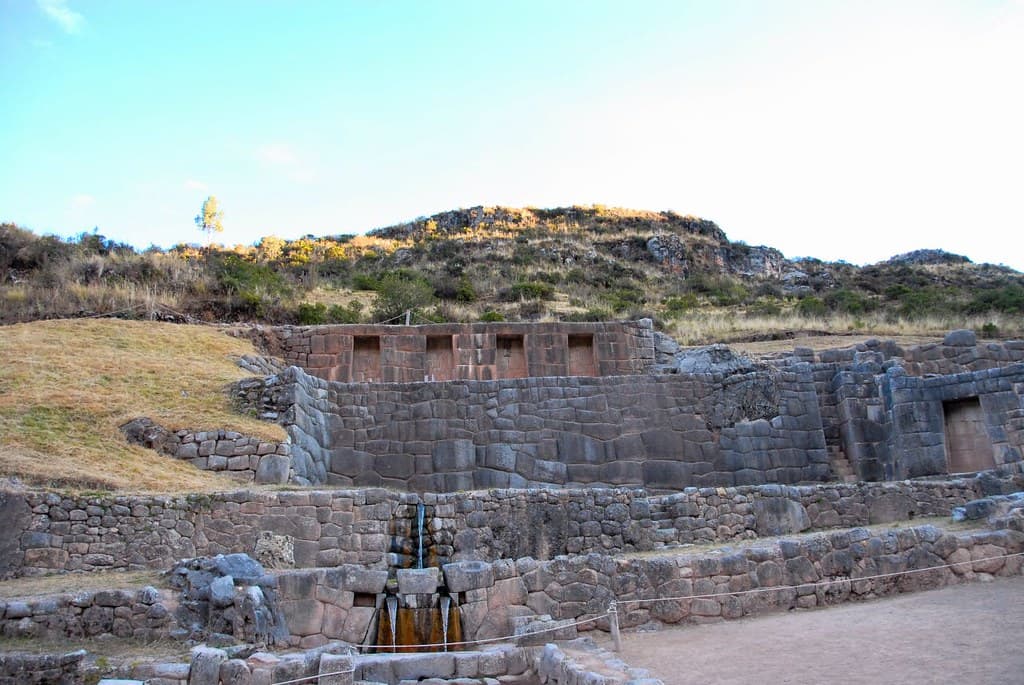
The name Tambomachay originates from Quechua, the native language of the Incas. In Quechua, “Tampu” means “place” or “lodging,” and “Machay” means “resting place.” This provides an intriguing hint about the origin of this site.
Fortunately, only a small part of this site was damaged during the Spanish conquest. A significant portion of the main structure of the site remains intact, including its unique carved stones. The aqueducts and channels still function to this day!
The way the walls were constructed at Tambomachay indicates that this complex was a sacred place for the Incas. It likely served as a sanctuary for the Inca, a location for ceremonial cleansing. This explains why this place is also known as the “Baths of the Inca.”
In Incan religion, water held a sacred role as it was considered the source of life. According to their beliefs, water symbolized the masculine, while the earth represented the feminine. The union between water and earth was a symbol of fertility, something sacred in their agriculture-centered culture. It’s no wonder they had temples dedicated to water throughout the empire!
Tambomachay is composed of a series of cascades and aqueducts constructed with precisely carved stones. The main water source in this complex is similar to the water temple found in Ollantaytambo, in the Sacred Valley. From this water source, two secondary cascades separate, each releasing precisely the same amount of water. What an impressive design!
And where does the crystal-clear water flowing through Tambomachay come from?
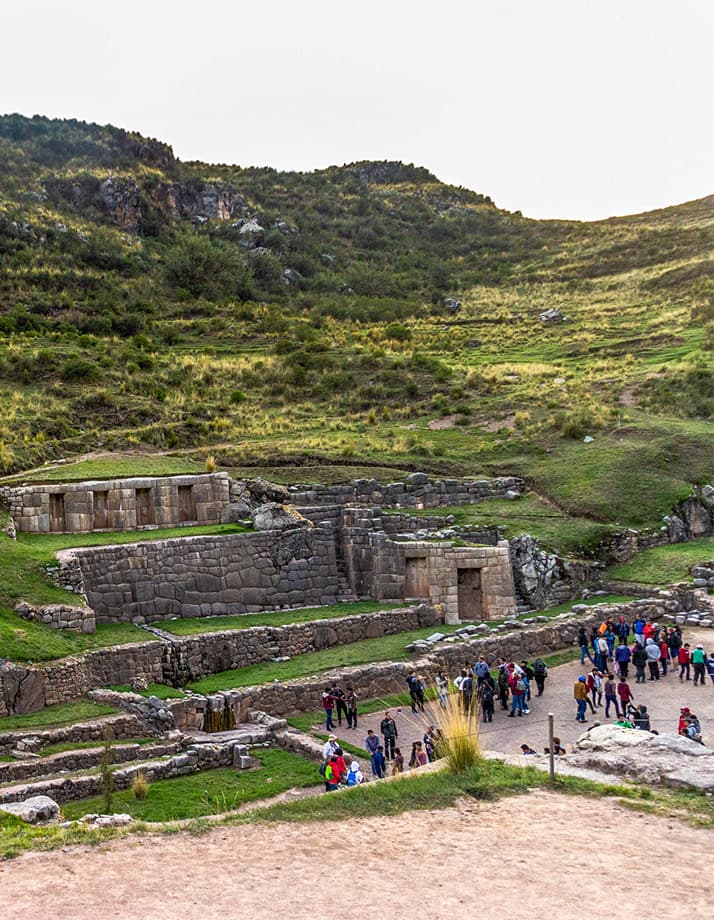
It appears that the Incas managed to channel water that comes from a spring. However, the exact source of the water remains a mystery.
It’s not just the fountains that amaze us today; there’s also a royal garden perfectly irrigated by the same spring. The channels that maintain this garden are a marvel in their own right.
The history of Tambomachay is closely linked to that of Puka Pukara, another Incan complex located about a 5-minute walk away. Everything indicates that only Incan royalty could enter the sacred water temple. So, it’s possible that their servants and soldiers waited for the Inca while lodged in Puca Pucara. In one way or another, both places are a must-visit during your trip to Cusco.
Where is Tambomachay located?
The archaeological site of Tambomachay is located in Peru, near the city of Cusco. It is situated approximately 7 kilometers northeast of Cusco. Tambomachay is part of the complex of Inca ruins that includes Sacsayhuamán , Q’enqo, Pukapukara, and Tambomachay itself. This site is renowned for its stone structures, water channels, and fountains, which were likely used for ceremonial purposes and as a resting place for travelers during the Inca Empire.
How to get to Tambomachay from Cusco?
To get to Tambomachay from Cusco, you have several options:
Through a Travel Agency: Most travel companies include Tambomachay in their city tour programs. Prices are usually reasonable, but be cautious of excessively low rates. The typical itinerary starts around 9:00 AM or 1:00 PM, visiting places like the Santo Domingo Convent (or Qorikancha), the Cathedral, and then heading out of the city to Tambomachay, Pukapukara, Qenko, and Saqsaywaman archaeological sites. The tour usually ends around 2:00 PM or 6:00 PM, depending on the schedule chosen.
Travel agency recommendation for all-inclusive city tours.
- Cross Travel Peru
- Juve Travel Peru
- Sam Travel Peru
Private Taxi: Hiring a private taxi is a good option, especially if you want to explore not only Tambomachay but also Qenko, Pukapukara, Cristo Blanco, and Saqsaywaman. The cost for this service should not exceed 100 Peruvian soles.
Public Transport (Buses, Vans, or Shared Taxis): You can take public transportation to Tambomachay. Head to the main stop near the Universidad Nacional de San Antonio Abad del Cusco, which shouldn’t take more than 15 minutes from the historic center. At this stop, you’ll find “Huerto” buses that will take you directly to the archaeological site. It’s approximately a 30-minute ride, and the staff on the transport will gladly assist you.
Regarding entrance fees: To enter Tambomachay, you’ll need to purchase the Cusco tourist ticket, available in partial or full options. There’s no separate entrance fee for Tambomachay . The site operates from 7:00 AM to 6:00 PM every day, Monday through Sunday.
Important information:
- Entrance Fee: Entry to Tambomachay is included in the General Tourist Ticket. The cost is S/. 130.00 for adults or S/. 70.00 for children and students.It’s also possible to purchase a Partial Tourist Ticket to visit only Sacsayhuaman and the nearby ruins. The price for this ticket is S/. 70.00 for adults or S/. 40.00 for children and students. Please note that this ticket is valid for only one day.
- Opening Hours: Tambomachay is open from Monday to Sunday, from 7:00 am to 6:00
- Salkantay Mountain
- Machu Picchu
- Ollantaytambo
- Colca Canyon
- Lake Titicaca
- Sacred Valley of the Incas
- Amazon Rainforest
- Nazca Lines
- Choquequirao
- Walking & Trekking Tours
- Short Hikes & Tours
- Cultural Discovery
- Family Holidays
- Pristine Rainforest
- Multi-Adventure Tours
- Peru Travel Packages
- Luxury Holidays Tours
- Inca Trail Alternative Treks
- 2025 Tickets & Guide
- San Martin School
- Reusable snack bags
- Reforestation with Native Trees
- Essentials Peru
- The best time to visit Peru
- What to bring on a Hike
- Things to do in Peru
- Getting to Machu Picchu
- Inca Trail Trek & Tours FAQs
- Camping Equipment
- How to Book & Payment
- Booking terms & conditions
- Coronavirus Travel Policy
Tambomachay: All the information you need
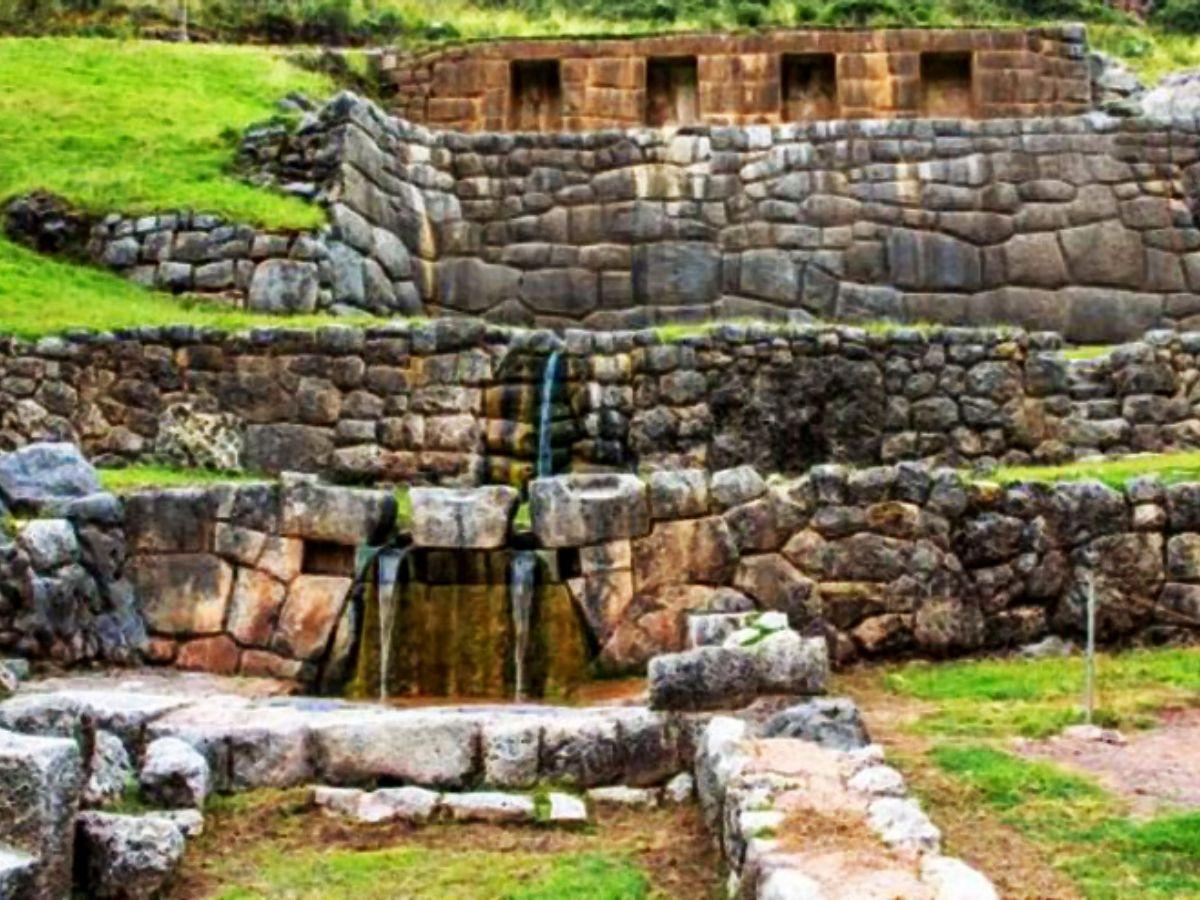
Tambomachay or Tampumachay as some Quechuologists prefer to call it, along with other attractions such as Pukapukara, Qenko and the white Christ are part of the archaeological center of Saqsaywaman, and one of the best preserved archaeological sites in Cusco, so it is an essential part of the tourist visits that take place in the famous City tour of the city. Its impressive water fountains and structures with top quality finishes that contrast with the natural beauty that surrounds it, undoubtedly make this place extremely important in Inca times.
Where is Tambomachay located?
This archaeological site is located 7 km from the city of Cusco, very close to the Sacsayhuamán fortress, at 3,700 meters above sea level. It is one of the best examples of the Inca ability to manipulate water.
Why was Tambomachay important?
The main function of this archaeological complex was to provide water to the nearby archaeological sites and also served as a resting place for the Inca ruler, right there is the main waterfall known as "the baths of the Inca", which until today its waters flow completely normal.
It is also believed that it was the hunting area of the Inca Yupanqui, so it can be deduced that the place would be flooded with numerous animal species.
It is possible that another of its functions would have been to provide water to the cultivation areas of the Inca site known as Puca Pucara.
Meaning or etymology of Tambomachay
The word Tambomachay that is used today to name these archaeological remains, is a compound word that comes from two terms, Tambo - which by chronicles and common use is known to refer to places built by the Inca state, where reserves were stored of various agricultural products, clothing or weapons - And Machay which is a place of rest or rest. The meaning of both words together would give meaning to all the functionality described above, in terms of place of purification, without mentioning the sacred meaning that it obviously had and that we also describe, which would make it likely that this name was recent, since there are also chronicles of the seventeenth century that call the place as Quinua Puquio.
Another use of the word Machay, translates it as a labyrinth, which together would be translated as tambo of the cave, in which case it could refer not only to the rock formations that exist in the place, but also possibly some underground formation that is could have identified it at some point, which would not be unusual due to the calcareous composition of the place where it is found.
How is the construction of Tambomachay?
The archaeological complex of Tambomachay consists of a series of gutters, aqueducts, several waterfalls that flow from the rocks and likewise, there was a kind of royal garden whose irrigation system came from a whole system of channels designed to perfection with great dedication. .
Tambomachay extends over 450 square meters of construction, in addition to having a perfect hydraulic design, it is also surrounded by immense walls, platforms, temples and Inca houses.
Until now, no excavations have been carried out, therefore, it is believed that its extension is broader.
Description and functionality
These ruins, which are also known as the Inca spa, are made up of a set of aqueducts or underground water channels, of whose origin to this day there is no exact knowledge, they feed 3 fountains or waterfalls, of which the main Located in the upper part, it feeds the secondary ones that have an exactly identical torrent or flow of water, being able to verify this by using two identical containers that are filled at the same time, which is a sample of the high level reached by the Incas in engineering. hydraulics. In addition, the 6 niches that can be found in the place, over the impressive main fountain of magnificent carvings, immediately confirm the ritual use of the place, which, according to the residual structures that surround it, may have been a closed area at some point. time, and that it was probably used as a temple to worship water. The platforms of which it is composed, in addition to the canalization of the river that bears the same name of the place, have an impressive masonry in which irregular blocks of limestone are perfectly assembled, which would give us an idea of the time in which the place was built, since this is an architectural feature of the imperial Inca period.
The foundations of a tower located in front of the main area provide the place with functions typical of a control center, probably for those who came from Antisuyo, although it is also possible that it was simply used to control strict security. that was offered to the Inca and his noble elite.
Popular culture also calls the place the baths of the Inca, Ñusta, or the resting place of this highest ruler. Both previous versions could be true, since possibly the Cusco elite used this place as a cult center for water and ritual purification or even fertility, since this element was directly related to life.
The existence of a garden with its own water system is also mentioned, which unfortunately is no longer functional today, however, the place is currently adorned with Queuña, molles and Kantu trees, which give the place a beautiful landscape. Likewise, some other chronicles, from a European perspective of the time, mention it as a hunting or recreational place that belonged to the Inca Tupac Yupanqui, it is certain that at some point these territories were full of the characteristic fauna of the Andes.
Studies carried out by Tom Zuidema in his book "The ceque system of Cusco" establish this place as a shrine to the first ceque of his Conti, which were imaginary lines that started from the center of Cusco to be distributed throughout the empire. of the Incas, taking as milestones, sanctuaries and sacred places of diverse indoles.
The incredible Baths of the Inca
The archaeological site of Tambomachay presents water channels made of carved stone that end in two slopes, crystal clear water flows through here throughout the year. There is a platform that served as a liturgical source and, probably, as baths for the Inca.
Where does Tambomachay's water come from?
The Tambomachay archaeological site was built on a river and springs. According to historians, the Incas calculated the flow of water in the channels so that they did not collide with it.
It is still not known exactly where the water that flows in its channels comes from. Without a doubt, it is one more manifestation of the extensive knowledge of the Incas, these constructions continue with flowing water after more than 600 years.
The cult or adoration of water
It was one of the most important customs by the Incas. The archaeological site of Tambomachay has an extraordinary hydraulic system.
It has underground channels carved into the rock, they transport a constant flow of clean water, throughout the year.
The unique shape of the space in which it was built gives Tambomachay an atmosphere of tranquility. In addition, it is one of the best examples of the ability of the Inca architects to preserve the harmony between the buildings and the landscape. The network of channels that filtered water poured the liquid into a platform at the bottom where the Inca worshiped the water.
How to get to Tambomachay from Cusco?
To get to Tambomachay, you have the following options:
With a travel agency:
All the companies that work in the sector include this attraction within their program, City tour or visit to the city, the prices are very accessible, we only recommend you not to get carried away by excessively low rates. In our case the itinerary runs as follows:
This activity can be carried out at two different times that allow the adaptation of any itinerary, the first that begins after the pick-up at 9:00 in the morning and the second at 1:00 p.m.
The conventional visit generally begins at the convent of Santo Domingo or old Qorikancha and immediately continues at the cathedral, which will be reached by taking an informative tour on foot along 03 blocks.
After these visits, you will finally leave the city in approximately 20 minutes to continue with successive visits to the archaeological centers of Tambomachay Pukapukara, Qenko and finally Saqsaywaman, the most impressive of all of them.
The visit ends around 2 or 6 in the afternoon, which, depending on the shift, makes it imperative that passengers leave after lunch, or if they wish, they have the option of bringing their own snacks.
With a private taxi:
Hiring a private taxi to visit Tambomachay is a very good option, and if you have mobility at your disposal you can take the opportunity to do the complete tour and not only visit Tambomachay but also Qenko, Pukapukara Cristo Blanco and Saqsaywaman. The service should not cost you more than 100 nuevos soles.
Buses, combis or colectivos to Tambomachay.
If you wish, you can take a collective service to get to Tambomachay. All you have to do is go to the place, in one of the many buses that pass by, and to take it you must arrive at the main location of the San Antonio Abad National University from Cusco, from the historic center this should not take more than 15 minutes. Finally, at this whereabouts you will have to wait for some buses from the company called "Huerto", once on board, it will take approximately 30 minutes to get to the archaeological center. The staff of this transport will be happy to help you.
To enter the archaeological center of Tambomachay, you must take into account that it will be necessary to purchase the tourist ticket for the city of Cusco, in any of its modalities, that is, a partial or integral ticket, remember that there is no independent entrance.
The opening hours of this archaeological center are between 7:00 a.m. and 6:00 p.m., Monday through Sunday, without exceptions.
Do not miss the opportunity to appreciate this impressive attraction that Cusco offers you, we assure you that this visit will enrich your experience.
Best Tours in Peru
- 3 Day Inca Trail Hike to Machu Picchu
- Apu Ausangate Trek Peru
- Rainbow Mountain Cusco Tour
- 7 Day Inca Trail Trek
- 4 Day Jungle Trek to Machu Picchu
- Short Inca Trail 2 Day Hike
- Tours From Cusco to Machu Picchu
- 4 Days Inca Trail to Machu Picchu
- Inti Raymi Festival
If you want to visit Machu Picchu , we recommend you to book your Machu Picchu Tickets in advance, so you will enjoy your Vacation in Machu Picchu without any problem.


Tambomachay, Cusco, Peru
This article may contain affiliate links .
Tambomachay, an intriguing archaeological site near Cusco, Peru, invites travelers into the world of ancient Inca civilization.
Known for its sophisticated water channels and ceremonial baths, this destination offers a glimpse into the Inca’s architectural brilliance and their spiritual connection with nature.

In this article, we delve into the history of Tambomachay, guide you on how to reach this enchanting site, and provide tips to enhance your journey through one of Peru’s most captivating historical treasures.
The Origins and History
Inca culture and spirituality, architectural highlights, the role of water, location overview, travel options to tambomachay, best time to visit, preparing for the journey, understanding the layout, key areas to explore, navigating the terrain, visiting tips, weather considerations, entry fees and opening hours, cultural etiquette and preservation tips, what to bring, health and safety, who built tambomachay.
Tambomachay, often revered as a masterpiece of ancient engineering, holds a special place in the heart of Peru’s history. Situated just a short distance from Cusco, this archaeological site is a remarkable representation of the Inca’s advanced understanding of hydraulic engineering and their deep reverence for natural elements, particularly water.

- Ancient Beginnings: Dating back to the 15th century, Tambomachay was built during the height of the Incan Empire. Its precise purpose remains shrouded in mystery, though it is widely believed to have been used for ceremonial purposes related to water worship.
- Architectural Ingenuity: The Incas, known for their architectural prowess, constructed Tambomachay using a series of aqueducts, canals, and waterfalls that still function to this day. This feat demonstrates their exceptional skills in civil engineering and hydrology.
- Ceremonial Significance: Water, a vital resource in the arid Andes, was revered by the Incas. Tambomachay, with its cascading water and ceremonial baths, likely played a significant role in rituals dedicated to the worship of water deities.
- Link to the Cosmos: The Incas believed in harmonizing with the natural and cosmic worlds. The strategic positioning and design of Tambomachay suggest its use as an astronomical observatory and a place for spiritual communion with nature.
- Unique Features: The site is distinguished by its finely carved stones, expertly fitted without the use of mortar, showcasing the Inca’s masonry skills.
- Water Works: The continuous flow of fresh water through the site’s channels is not only a marvel of ancient engineering but also adds a serene ambiance, making it a peaceful retreat from the bustling cities.
- Symbolism and Usage: Water at Tambomachay was more than a physical resource; it symbolized life, purity, and renewal. The site’s design illustrates how the Incas harnessed and revered this element, integrating it seamlessly into their architecture and daily rituals.
How To Get To Tambomachay
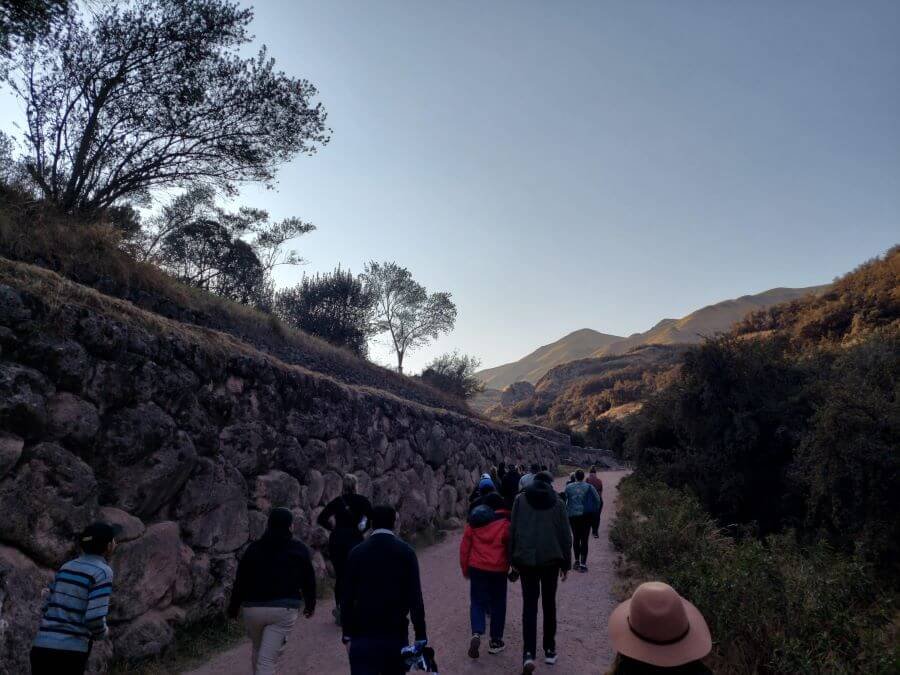
- Proximity to Cusco: Tambomachay is conveniently situated about 8 kilometers (5 miles) from Cusco, making it easily accessible for visitors staying in the city.
- Setting Amidst the Andes: The site is nestled in the Andean landscape, offering breathtaking views and a serene environment.
- By Road: The most common way to reach Tambomachay is by road. Visitors can opt for a taxi, a private tour vehicle, or local buses that run from Cusco.
- Hiking Option: For the more adventurous, a hike from Cusco to Tambomachay is a rewarding experience. The route offers panoramic views and passes through other significant archaeological sites like Sacsayhuamán and Qenko.
- Guided Tours: Many travel agencies in Cusco offer guided tours to Tambomachay, often including it as part of a larger itinerary covering multiple nearby Incan sites.
- Seasonal Considerations: The best time to visit Tambomachay is during the dry season, from May to September. During this period, the weather is more favorable, with less rainfall and clearer skies, making it ideal for exploring the site.
- Crowd Management: Mornings or late afternoons are usually less crowded, offering a more peaceful experience.
- Altitude Acclimatization: Given Cusco’s high altitude, it’s advisable to spend a couple of days in the city to acclimatize before venturing out to Tambomachay.
- Travel Essentials: Comfortable walking shoes, water, sunscreen, and a hat are essential items to carry, considering the outdoor nature of the site and the high-altitude sun exposure.
Navigating Tambomachay (And Some Tips)
This section provides insights into navigating Tambomachay, highlighting key areas and offering tips to enhance your experience.
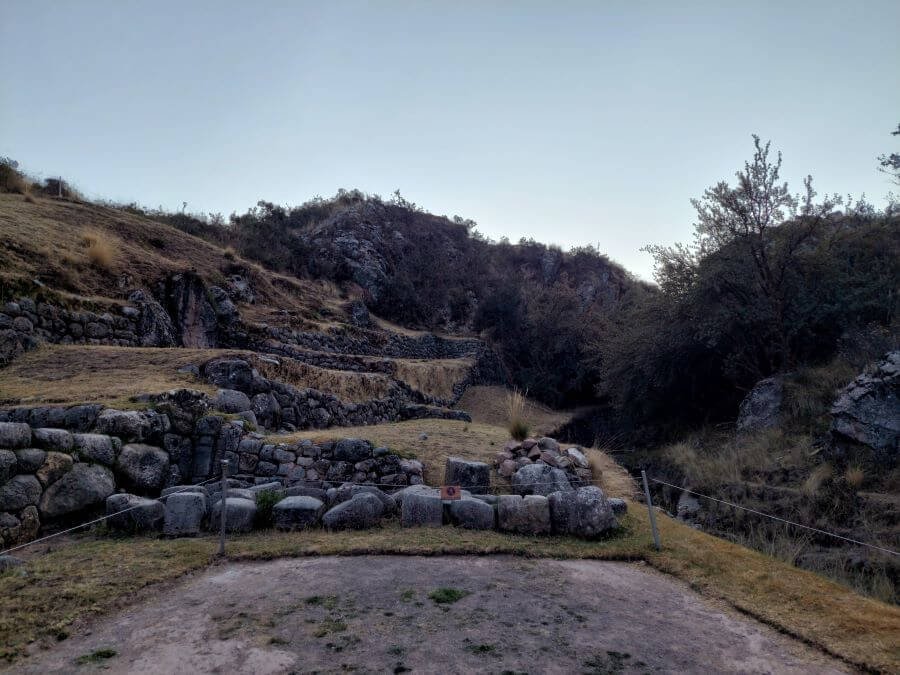
- Compact Site: Unlike other sprawling Incan ruins, Tambomachay is relatively small and compact, making it easy to explore.
- Main Attractions: The site is primarily known for its intricate water channels and ceremonial baths. These features are the focal points of Tambomachay and are not to be missed.
- Ceremonial Baths: The centerpiece of Tambomachay, these baths are fed by a natural spring and were likely used for ritual bathing. The flow of water through these structures is a testament to the Inca’s advanced hydraulic engineering.
- Waterfalls and Aqueducts: Observe the intricately carved waterfalls and aqueducts, which demonstrate the precision and skill of Inca stonemasons.
- Upper Terraces: Climb to the upper terraces for a panoramic view of the surrounding valley and a closer look at the site’s construction.
- Walking Paths: The site is connected by a series of walking paths that are well-maintained but can be uneven in places. Sturdy footwear is recommended.
- Altitude Considerations: Situated at a high altitude, visitors should move slowly and take frequent breaks to avoid altitude sickness.
- Guided Tours: Consider hiring a local guide to gain deeper insights into the history and significance of the site.
- Photography: Tambomachay is a photogenic site, so bring a camera to capture its unique architectural elements and scenic beauty.
- Respect the Site: As a historical landmark, it’s important to respect the site by not climbing on fragile structures and following all posted guidelines.
- Seasonal Changes: Be prepared for sudden weather changes, as the region can experience rapid shifts in temperature and precipitation.
- Admission Details: There is usually an entry fee to visit Tambomachay, which is often included in the Boleto Turístico, a ticket that grants access to multiple sites around Cusco.
- Opening Hours: Tambomachay typically opens early in the morning and closes in the late afternoon. Check the latest opening times before your visit, as they can vary seasonally.
- Respect for the Site: Always stay on marked paths and refrain from touching or climbing on the ancient structures to preserve them for future generations.
- Cultural Sensitivity: Be respectful of local customs and traditions. If you’re interacting with local communities or taking photographs of people, always ask for permission first.
- Essentials: Pack water, sunscreen, hats, and sunglasses to protect yourself from the sun at high altitudes. Dress in layers, as temperatures can fluctuate.
- Comfortable Footwear: Good walking shoes or hiking boots are recommended, as the terrain can be uneven and rocky.
- Altitude Sickness: Be aware of the symptoms of altitude sickness. Stay hydrated and consider spending a day or two in Cusco to acclimatize before visiting.
- Travel Insurance: It’s advisable to have travel insurance that covers high-altitude activities and unexpected medical expenses.

By following these tips and recommendations, your visit to Tambomachay will be not only enjoyable but also respectful and mindful of the site’s historical and cultural significance. Whether you’re a solo explorer or traveling with a group, these guidelines will help you navigate the site responsibly and make the most of your time in this ancient Incan sanctuary.
This article has guided you through the historical significance, travel logistics, and practical tips for visiting the fasinating archaeological site of Tambomachay, Cusco, Peru, enriching your experience and understanding.
Tambomachay stands as a proud reminder of the Incan legacy, a must-visit for anyone seeking to connect with Peru’s rich cultural heritage.
More Reading...
- Best Travel Baby Monitors
- Best Adventure Travel Blogs
- 48 Of The Best Vegan & Vegetarian Travel Blogs For…
- Best Travel Gifts
- Best Travel Accessories
- Best Travel Money Belts
Dan Claydon

- Experiences
- Destinations
- The Company
- Photo Gallery
- Tambomachay

While explaining the extensive engineering knowledge of the Inca civilization, Tambomachay is certainly one of the perfect exemplaries. However, not much is known about this ancient construction but at least we can deduct some of its main purposes thanks to how the structure has been assembled. The famous prehispanic culture was widely recognized for acquiring the artistic, cultural, and engineering skills of the communities they had conquered. Somehow, they managed to exploit this information and improve it throughout the years. Without a doubt, the Inca Empire had a complex system of hydraulic engineering as shown in the Moray Archeological Site, Tipon, and even in Machu Picchu , an ancestral citadel that keeps on impressing us. Likewise, Tambomachay is one of those impressive Inca remains that must be talked about, essentially because of its remote location and the possible functions it served. Therefore, we’d like to share with you all the hidden details of this archeological site that has significantly marked a path through the architecture and engineering evolution of the Incas.
Etymologically, Tambomachay is a composed Quechua word, where Tambo means “Place” or “Storage,” and Machay means “Rest,” the proper translation would be “Place of Rest,” which gives us a hint of the potential purpose of this impressive structure. Luckily, the sacred location wasn’t severely harmed by the hand of the Spaniards, thereby, most of its structure remains intact and for fact, some of its water channels have been functioning until the current date. According to archeologists, due to its architectural style, Tambomachay was a Sacred location for the Inca elite, it seemed to be a worship place where the Inca emperor used to bathe and cleanse his body and soul, which is why it is often referred to as the “Bath of the Inca.” Likewise, some theories point it out as a cult center, where the ancient community used to perform rituals and offerings to the water. During Inca times, the water represented the masculinity of the world, whilst the Pachamama symbolizes femininity, both were portrayed as the fertility by the Inca culture. Therefore, they considered the worshiping of the water very important since it was the source of all life. Tambomachay consists of a series of aqueduct canals and waterfalls, four walls that fit perfectly to a base held by three parallel terraces. The principal water fountain in this structure is called Ñusta Bath since it is similar to the ones found in Ollantaytambo, there are two more waterfalls that consistently supply the same amount of water. Apparently, the Incas managed to conduct water from a nearby spring or river to this location, however, it is uncertain to know the source of it, which makes it even more intriguing. In addition, this location also had a royal garden perfectly irrigated by complex water channels that were especially made for this function. Other historians have theorized that Tambomachay served as a control center for the people that came to the Cusco from the Antisuyo, though this was never confirmed. Its strategic location offers the characteristics of a military outpost but it is significantly more related to be a water cult center or a resting point for the Inca elite. Thanks to the foundations discovered after the excavations, now we can deduct that it was an enclosured location, where the Incas looked to integrate the surrounding nature with the structure of the water temple. The civilization was characterized for perfectly merging their sacred buildings and citadels with the natural scenery.
How to Get There?
Tambomachay is located on a hilltop, 8 kilometers away from the city of Cusco. It is part of the archeological circuit of the Imperial City, composed of three more archeological sites. To visit the so-called Inca Bath, one must acquire the Tourist Ticket , which offers the entrance to different prehispanic sites in the outskirts of Cusco. If you’re planning to do this on your own, remember that you’ll need to hire a local guide to enjoy this attraction to its fullest. Getting there on your own is as easy as taking a taxi from Cusco, bear in mind that transport could be limited at the archeological site, which is why you must take precautions and hire a certified taxi driver for this adventure. Price may range from 10-15 soles per trip. Luckily for you, this attraction is included in our Archeological City Tour , where you’ll get to experience all the Inca settlements around the city plus an exclusive walking tour through the Historic Center of Cusco. Tambomachay is located at 3,700 meters above sea level, situated only 20 minutes away from the city center, near the archeological site of Pukapukara. It is certainly one of the unmissable attractions in Cusco.
General Information:
- Operating Hours: Monday to Sunday from 07:00h to 18:00h. - Entrance: Tourist Ticket, which includes all the sights within the archeological circuit of Cusco (Included in all our travel packages).
Dare to uncover the mysteries of the ancient Inca civilization with Viagens Machu Picchu and explore Cusco like a real expert! There are so many things to do in Cusco city that you definitely can't miss, we'd love to show you everything it has to offer so you can make the most of your experience while you're here!
- Sacsayhuaman
- Puca Pucara
- Huchuy Qosqo
- Rainbow Mountains of Peru
- Lagoons & Snow-Capped Mountains
- Historic Center of Cusco
- Inca Palaces
- San Blas Neighborhood
- Museum of Pre-Columbian Art
- Inca Museum
- Machu Picchu Museum: Casa Concha
- Casa Garcilaso
- Other Museums in Cusco
- Archeological City Tour
- Sacred Valley Tour
- Ruta del Sol
- South Valley Tour
- Maras & Moray Tour
- Rainbow Mountain Trek
- Quad Bike Tour
- Lake Humantay Trek
- Free Walking Tour
- 7 Lakes of Ausangate Trek
- The Apukunaq Tianan+Salineras+Moray+Huaypo Lake & Piuray- ATV Full Day Tour
- Adventures in Cusco
- Mystical and Esoteric
- Art & Culture
- Adventure over 3200 meters
- Restaurants
- Cusco Travel Advice
- When to Visit Cusco
- How to Get to Cusco
- Where to Stay in Cusco
- What to Do in Cusco
- Where to Eat in Cusco
- How to Get Around Cusco
- Best Spots to Do Shopping in Cusco

You want to know more? Access our blog and learn more about this destination.
Package suggestions
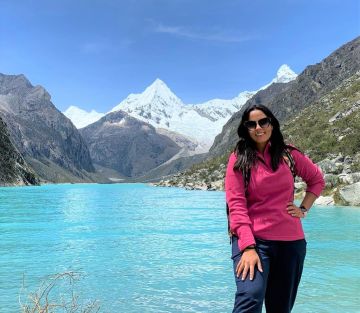
Adventure in the Peruvian Andes
You want to know more? Access our blog and learn more about this destination
Tambomachay
Historians can’t seem to agree on the true purpose of Tambomachay, some believe it was an Inca shrine to water, whilst others think that it was a military outpost guarding the entrance to Cusco. Tambomachay has a complex system of channels which carry water through a set of terraces until the flow is divided and falls over two small cascades. The first part of its name “Tambo” (or Tampu in Quechua) is usually associated with Inca structures used for military or administrative purposes meaning place of rest, and the second part of its name “machay” means underground cavity. According to Peru’s Ministry of Culture the site was thought to have been built around 1500 A.D.
Where is Tambomachay
Tambomachay is located about 8km’s (5 Miles) from the centre of Cusco, and is situated on the road from Cusco to Pisac.
Entrance Tickets
To enter Tambomachay you will need to buy the Cusco Tourist Ticket (Boleta Turistica General / BTG). You will need to either buy the full BTG ticket or a partial circuit 1 ticket to gain entrance. A single entrance ticket to Tambomachay is not available, but BTG tickets can be purchased at the entrance to Tambomachay.
Getting There
Taking a taxi is by far the easiest way to get to Tambomachay. The journey time is about 20 minutes from Cusco’s main square – Plaza de Armas . Unless you plan on hiking back to Cusco you will need to ask the taxi to wait for you whilst you visit. A local taxi will charge S/. 35 – 50 (US$ 13 – 18) for a round trip. A private taxi arranged by your hotel (recommended) may charge more.
By Colectivo
A local colectivo service offers a more economical way to get to Tambomachay. Leaving every 10 – 15 minutes during the day from Calle Puputi (5-7 mins from the centre of Cusco ), take one of the many collective services heading to Pisac. Simply ask to be dropped off at Tambomachay. The price should be around S/. 5 – 6 (US$ 1.80 – 2.15) per person. Take note that you may find it difficult to return to Cusco afterwards. If you don’t want to walk, try waving down a passing colectivo or a taxi.
Coming soon…..
YOU MAY LIKE

Lima to Machu Picchu – Agencies DON’T want you to read this!

#1 Rated Day Trips From Lima To Unforgettable Destinations

Everything You Need to Know to Avoid the Typical Tourist Mistakes At Machu Picchu

What NOT To Do When Visiting Rainbow Mountain

Spend 50% less and see 100% more in Peru

Machu Picchu Tickets – All You Need To Know!

These Hidden Destinations Just Outside Of Lima Will Blow Your Mind!

Peru – How to Avoid Being a Typical Tourist

OFFICIAL: This Company Was Voted The Best Way To Get Around Peru

Peruvian Travel Secrets That Only The Locals Know
- Tours Machu Picchu
- Tours Inca Trail
- Tours for Peruvians
- Tours popular
- Tours Sacred Valley
- Tours Mountain 7 colors
- Tours in Peru
- Tours in Lima
- Tours in Arequipa
- Tours in Puno
- Tours in Ica
- Tours in La Libertad
- Tours in Lambayeque
- Tours in Piura
- Tours in Ancash
- Tours in Madre de Dios
- Tours Family
- Tours adventure
- Tours Inti Raymi
- Tours in Ayacucho
- Tours in San Martín
- Tours in Amazonas
- Tours Discounted
- Machu Picchu the Inca wonder
- Inca Trail the trail of the Incas
- Customs and traditions
- Natural Landscapes
- All about Machu Picchu
- Sports and other activities
- Archaeological sites
- Information for your trip
- Book Cusco and Machupicchu
- Inti Raymi Magazine
- Mountain 7 Colors Magazine
- PLANNING MY TRIP
- Whatsapp: + 51 982108083
- Phone: + 51 84 207064
- Awards and recognitions
Tambomachay
Tambomachay was one of the Inca monuments where water was best worked. Such is the majesty of Inca work that to this day, five hundred years later, water continues to circulate there. The chroniclers affirm that the Inca emperor spent his days of relaxation there. It is one of the most visited archaeological sites in Cusco along with the Coricancha, Sacsayhuaman, Qenqo and Pucapucara.
All about Tambomachay
What is Tambomachay?
What does your name mean, what is your location, tambomachay map, route to get there, history of tambomachay, tambomachay archaeological complex, cost of the visit.
- What things to bring?
Climate of Tambomachay
Image gallery, additional information, tips for your visit.
Tambomachay is one of the most famous Inca archaeological sites in the city of Cusco together with Sacsayhuaman, the Coricancha and others . In the time of the Incas it was a ceremonial center that worshiped water. It has terraces, platforms, enclosures but, above all, aqueducts and water channels designed with great perfection. It is believed that it served as baths for the Inca emperor Túpac Yupanqui (1411 – 1493). Until today, after almost 5 centuries, the water continues to flow with great precision.
The chronicles indicate that Tambomachay, in addition to the Inca’s resting place. It was also a sacred place because it belonged to one of the ‘ceques’ or sacred lines that started from the city of Cusco. Likewise, Tambomachay is surrounded by caves, which (according to the Inca worldview) communicated with the world of the dead (Uku pacha).
Tambomachay comes from two Quechua words (Tampu and Machay) that together mean ‘Place of rest’ . Its name is due to the fact that this site served as private baths for the Inca emperor.
Tambomachay is located just 8 kilometers northeast of the city of Cusco. This important Inca archaeological site is located at the top of a mountain, from where you can see the Cusco city. It is located 3,700 meters above sea level (12,139 feet altitude).
Most tourists come to Tambomachay through the famous ‘City Tour Cusco’, which includes the transportation service to this and its other tourist destinations such as: the Cathedral, Coricancha, Sacsayhuaman, Qenqo and Pucapucara.
The other way to get to Tambomachay is to go on your own. To do this, you must start from some point in the center of the city of Cusco and follow the highway that leads to Sacsayhuaman. The taxi ride costs approximately US $ 5 . Another option is to go by public service bus, whose route is longer but cheaper (approximately $ 0.3 per ticket).
Tambomachay was built in a time of Inca development, possibly in the 15th century, as part of a process of conquests and important buildings in Cusco . This is demonstrated by its walls carved with great precision. According to the Inca worldview, this building was within the so-called ‘Inca ceque system’, a set of royal roads that included important huacas and ceremonial centers of great importance for the Incas.
The researchers note that Tambomachay served an important religious function. This is demonstrated by a set of stairs that lead to a cave (called Huchuy Mach’ay). It should be noted that the Incas considered caves sacred places that communicated the world of living beings (the Kay pacha) with the world of the dead (Uku pacha). In the place there is not only one, but several caves.
The architectural characteristics of Tambomachay account for a place of great religious importance. However, the importance of water in the place is evident. Because of this, some chroniclers point out that the site served as a resting place for the Inca and royalty. One of its most representative buildings are the so-called ‘Baños de la ñusta’. Today, Tambomachay is one of the most important archaeological sites in the city of Cusco.
Tambomachay is divided into four stepped terraces that are adapted to the shape of the mountain. Each wall is carved with great quality, which shows that the place was a temple or huaca of relevant importance. One of the most remarkable walls is fifteen meters long and four meters high. This wall has four niches and a tower in the shape of a circle on the outside, which would have had a defense function.
What stands out the most in Tambomachay, without a doubt, are its water channels. These come from a natural source located in the highest part of the archaeological site . The water in Tambomachay is transferred downwards until it reaches the lowest level and flows through two channels into the so-called ‘Baños de la ñusta’. The Tambomachay hydraulic system has the particularity of filling exactly the same amount of water in both canals where they flow.
The ‘Baños de la ñusta’ (construction also called the ‘Baños del Inca’) is a joint formation of superbly assembled and polished stone blocks where, it is presumed, the Inca himself relaxed. Some researchers suggest that while the Inca rested in Tambomachay, his troops did so in Pucapucara, a place located just a few meters away. The conservation status of both sites is good. They are two of the most visited archaeological sites in the city of Cusco.
The way more tourists visit Tambomachay is with the half-day ‘City Tour Cusco’, which includes transportation service to all tourist attractions. This tour has a cost of 70 US dollars per tourists, approximately. The tour also includes a visit to the Cathedral of Cuzco as well as the archaeological sites of Coricancha, Sacsayhuaman, Qenqo and Pucapucara.
The other way to visit Tambomachay is to go on your own. To do this, you must take a taxi from the center of the city of Cusco . The cost of the trip is approximately 5 US dollars (the price is negotiated with the taxi driver). To enter the archaeological site, the best option is to acquire the ‘Cusco Tourist Ticket’. This ticket allows you to visit Tambomachay and the other nearby Inca sites (Sacsayhuaman, Qenqo and Pucapucara). The cost of the ticket is 70 Peruvian soles (approximately 22 US dollars).
The archaeological site of Tambomachay is open to tourists every day of the year from eight in the morning until five in the afternoon.
What to bring?
- Comfortable sneakers.
- Raincoat for the rain.
- Hat or cap.
- Comfortable clothes.
- A jacket to keep warm at sunset.
- Documents (passport, identity document).
- Photo camera.
- Extra cash (if you want to purchase a craft).
Tambomachay has a temperate climate with strong winds and cold at night. The average temperature is 12ºC. (53.6ºF) . During the morning the temperature can reach a maximum of 22ºC. (71.6ºF). At night, the cold can drop down to 1ºC. (33.8ºF). The rainiest months are January, February and March. The driest are May, June and July. Most tourists visit in the afternoon (2 to 5 in the afternoon), when the weather is pleasant.
Tambomachay is also known as ‘El balneario del Inca’ . This nomination is due to the fact that the place is surrounded by mountains, rivers, streams and water channels that, when silently listened to, produce a relaxing atmosphere. Some chroniclers suggest that it was the resting place of the Inca emperor.
Some chronicles also suggest that in Inca times, wild animals walked in Tambomachay. They also point out that the place served as a hunting ground for Emperor Túpac Yupanqui.
Tambomachay are in good condition. Its high, precisely polished walls demonstrate religious significance . This is mainly explained by its location in one of the ‘Inca ceque systems’ (system of roads and main religious temples in the empire). However, it is also explained by the existence of nearby caves or caves. According to the Inca worldview, these communicated the world of the living with that of the dead, so it had a relevant religious importance.
Tambomachay sits at 3,700 meters above sea level (12,139 feet elevation) . At that altitude, tourists can feel some of the symptoms of altitude sickness such as: fatigue, nausea and excessive agitation when doing physical activity. These discomforts usually disappear gradually when the body acclimates to the new mountain geography (between two and three days). One way to lessen your symptoms is to drink plenty of water (not alcoholic beverages) and avoid fatty foods.
If you travel to Tambomachay on your own, take advantage of visiting the closest archaeological sites such as: Pucapucara, Qenqo and Sacsayhuaman. All these places are included in the ‘Cusco Tourist Ticket’, which can be purchased on Avenida El Sol 185, in the center of Cusco.
- Destinations
- Planning my trip

- [email protected]
- +51 908 883 958
- Machu Picchu Circuits
Tambomachay: The Ceremonial Oasis of the Incas
Nestled in the Peruvian Andes, Tambomachay stands as a testament to Inca ingenuity and spirituality. This archaeological wonder, often termed the “Bath of the Inca,” reveals a deep reverence for water. Its intricate channels and ceremonial platforms offer a glimpse into the rituals of a bygone era.
The Incas, known for their advanced masonry and architectural prowess, chose this site for its natural springs. Through the stone channels and cascading waters, Tambomachay highlights the Inca’s harmonious connection to nature. As we delve deeper, the site unravels its secrets, narrating tales of ceremonies and royal retreats.
Water worship: Understanding Tambomachay’s ritual significance
In the heart of the Andes, Tambomachay stands prominently, echoing tales of the Inca civilization’s spiritual practices. This ceremonial site is often overshadowed by other Inca marvels. Yet, Tambomachay offers invaluable insights into the profound respect the Incas held for natural elements.
Water, an essential life force, played a crucial role in Inca rituals. Tambomachay, with its intricately carved aqueducts and cascades, is a manifestation of this reverence. Each drop flowing through the site symbolizes purity, renewal, and life’s cyclical nature.
If one plans a day in Cusco , visiting Tamboachay is imperative. It provides a serene contrast to the bustling city streets. The gentle murmurs of water, combined with the site’s architectural brilliance, provide a calming retreat.
Yet, there’s an essential point for visitors to note. Altitude sickness in Cusco is a genuine concern. The elevation of both Cusco and Tambomachay requires tourists to acclimatize, ensuring a comfortable visit.
It isn’t just about water channels and stonework. It’s about understanding the profound connection the Incas nurtured with their environment. The way the waters are directed, the altars positioned, and the platforms constructed; each detail in Tambomachay has a story, a purpose.
By the time one leaves Tambomachay, it becomes evident that it’s not just a historical site. It’s a sacred space where the past communicates with the present, inviting us to pause, reflect, and appreciate the delicate balance of nature.
For those who truly wish to immerse themselves in Inca traditions and spirituality, a visit to Tamboachay is a must. Allow the waters to share their ancient tales and the stones to whisper their secrets.

Architectural brilliance: The stone structures and channels of Tambomachay”
Nestled in the scenic outskirts of Cusco, Tambomachay stands as an emblem of Inca architectural prowess. While its purpose remains a topic of debate, its design can’t be overlooked. Meticulously crafted, the site showcases the Incas’ remarkable mastery over stone construction.
At Tambomachay, terraced stone walls rise gracefully, each block fitted with precision. Unlike the mortar-dependent architecture of many civilizations, the Incas had a unique approach. They carved stones to fit together seamlessly, defying both time and elements.
Adjacent to these walls, one can’t help but marvel at the intricate water channels of Tambomachay. These systems, still functional, convey water from nearby springs, a testament to Inca engineering genius. The way water flows through these channels, filling ceremonial baths, suggests a profound understanding of fluid dynamics.
Not far from Tambomachay, one encounters “ Qenqo “, another enigmatic ceremonial site. While Qenqo is distinguished by its labyrinthine tunnels, Tambomachay impresses with its emphasis on water. Together, they provide a comprehensive glimpse into Inca ceremonial architecture.
“ Sacsayhuaman “, another nearby marvel, contrasts Tambomachay with its imposing walls and zigzagging ramparts. Yet, both sites share a common thread: an unparalleled dedication to craftsmanship.
Returning to Tambomachay, it becomes clear that every stone, every channel has been placed with intention. This isn’t just construction; it’s art, blending utility with aesthetics.
For anyone keen on exploring Inca architecture, Tambomachay is indispensable. Beyond its stone structures, it offers a lesson in harmony, between humanity and nature, form and function. So, while in Cusco, let Tambomachay transport you to a time when every stone told a story.


Bridging the ancient and modern: Conservation and tourism at Tambomachay
Tambomachay, with its cascading waters and intricate stonework, is a tangible connection to the Inca past. Yet, preserving such a relic in today’s age poses challenges. Balancing conservation with accessibility is key.
The importance of Tambomachay isn’t merely historical. It’s an emblem of cultural pride, a silent witness to the engineering prowess of ancient peoples. With the rise in global tourism, many now flock to witness this wonder. This has put conservationists on alert.
Efforts have been made to maintain the site’s integrity. Limiting visitor numbers, providing guided tours, and setting pathways ensure minimal disruption. At the same time, it gives tourists a glimpse into a bygone era.
The balance is delicate. Too much restriction might alienate visitors. Yet, unchecked footfall risks damaging the very essence of Tambomachay. Conservation isn’t just about preserving stones, but the spirit they embody.
Modern technology aids this endeavor. Advanced mapping and restoration techniques help maintain the site. By using these tools, Tambomachay becomes a bridge. It connects the ancient Inca world with our digital age, both coexisting in harmony.
As you marvel at Tambomachay’s wonders, remember there’s more to explore. For a deeper dive into the Inca legacy, consider embarking on a journey. A Choquequirao Trek offers rugged beauty and fewer crowds. Alternatively, the Short Inca Trail provides a snapshot of the region’s splendors. Both promise memories that will last a lifetime.

Our Partners

- Cusco Office Address: Pasaje Pumacchupan #196. Urb: CENTRO HISTORICO
- Monday through Saturday 9:00AM – 1:00PM & 3:00PM – 7:00PM Sunday 3:00PM – 7:00PM
- Monday through Friday 9:00AM – 1:00PM & 3:00PM – 7:00PM Saturday 9:00AM – 1:00PM Sunday CLOSED
- Inca Trail Availability
- Payments Methods
- Terms & Conditions
- Social Projects
- Our Certifications
- Machu Picchu new Regulations
- Our Satellite Phones
- Inca Trail Treks
- Salkantay Treks
- Inca Jungle Peru
- Choquequirao Treks
- Tambopata Amazon Rainforest
- Manu National Park
- Ausangate treks
- Lares Treks
- Rainbow Mountain
- Humantay Lake
Quechuas Expeditions is a tour operator with more than 20 years of experience in the service and quality of attention to all our travelers; we are direct operators in all our routes; that is why we will always be with you.
We are a company committed with our workers, our environment and the commitment with our community; we offer responsible trips all over Peru; with us you can personalize your trip.

Tambomachay
Located five miles from Cusco, Tambomachay is also known as “the Baths of the Inca”. For the Inca, water was a sacred element, and due to the scattered pools here, historians believe the temple was reserved for Inca royalty. Throughout, the spring waters are masterfully diverted into aqueducts, pools, and stone-carved waterways.
At nearly 13,000 feet (3962 meters), Tambomachay is one of the highest Inca archaeological sites in the Sacred Valley of the Inca. Multi-tiered terraces are built into the mountainside in such a way that blends organically into the landscape. A relaxing, powerful meditative place, Tambomachay sees far fewer visitors than some of the more famous ruins.
Travelers have many options for exploring Tambomachay as part of a half-day, full-day, group or private tours that leave from Cusco. Multi-day tours combinexa0 visits to Lima, Machu Picchu, and various towns and archaeological sites in the Sacred Valley of the Inca, such as Chinchero, Moray, Pisac, and Maras. Adventurers may explore the area on mountain bikes and ATVs.
- Wear comfortable shoes, as you will be walking a lot on uneven stones.
- Because of the high altitude, be sure to stay hydrated and take it slow.
- Travelers should have a moderate physical fitness level.
- The site is accessible as part of the Boleto Turistico, which allows entrance to 16 sites around Cusco.
- The site is not wheelchair accessible.
- Many tours include ground transportation, transfers, entrance fees, camping and hotel accommodations, and guides.
- Tours operate in all weather conditions, so remember to dress appropriately. Sweaters for colder months and a rain poncho for the rainy season, generally January through April.
Tambomachay is located 5 miles (8 kilometers) north of Cusco along the road to Pisac. Take a taxi from Cusco’s Plaza de Armas, and ask the driver to wait at the site for the return trip. The trip is about 20 minutes. The round trip way cost is less than $20.
Tambomachay is open daily, 7:00am - 6:00pm. Off the beaten path, the site is rarely crowded. Come in June, for Festival of the Sun (Inti Raymi) when Inca folk dancers perform in vibrant costumes. Easter Week (Semana Santa) is one of the best times to visit, and in December, the Santuranticuy Festival is Peru’s biggest crafts fair, with hundreds of artists displaying work in the Plaza de Armas.
After Tambomachay, visit the Pisac Indian Market, one of the most popular and picturesque of the indigenous markets in the Cusco region. Travelers from all over the world make the pilgrimage to this mountain town to purchase all manner of textiles, ceramics, jewelry, ponchos, rugs, hats, gloves, Andean instruments, ceramics, alpaca and llama woven clothing, and a host of lovely souvenirs.
Things To Do Available ( 208 )
City tour in cusco tour with pick up.
Duration: 5 hours
Cuzco City Tour and Archaeological Ruins in Half Day
Cusco city half-day tour, 3 days and 2 nights huchuy qosqo trek to machu picchu.
Duration: 3 days
City Tour in Cusco
Cusco city & inca sites with sacsayhuaman & qorikancha.
Duration: 6 hours 30 minutes
Classic Machu Picchu & Cusco 5 Days
Duration: 5 days
Duration: 4 hours
Private Full Day Historical Cusco with Sacsayhuaman
Duration: 6 hours
Combined city tour cusco
Duration: 5 hours 30 minutes
Travel Like an Expert with AAA and Trip Canvas
Get ideas from the pros.
As one of the largest travel agencies in North America, we have a wealth of recommendations to share! Browse our articles and videos for inspiration, or dive right in with preplanned AAA Road Trips, cruises and vacation tours.
Build and Research Your Options
Save and organize every aspect of your trip including cruises, hotels, activities, transportation and more. Book hotels confidently using our AAA Diamond Designations and verified reviews.
Book Everything in One Place
From cruises to day tours, buy all parts of your vacation in one transaction, or work with our nationwide network of AAA Travel Agents to secure the trip of your dreams!
- +51 984 004 472
- Machu Picchu, Cusco, Perú
- Mon-Sat: 10 AM – 5 PM
Tambomachay Cusco
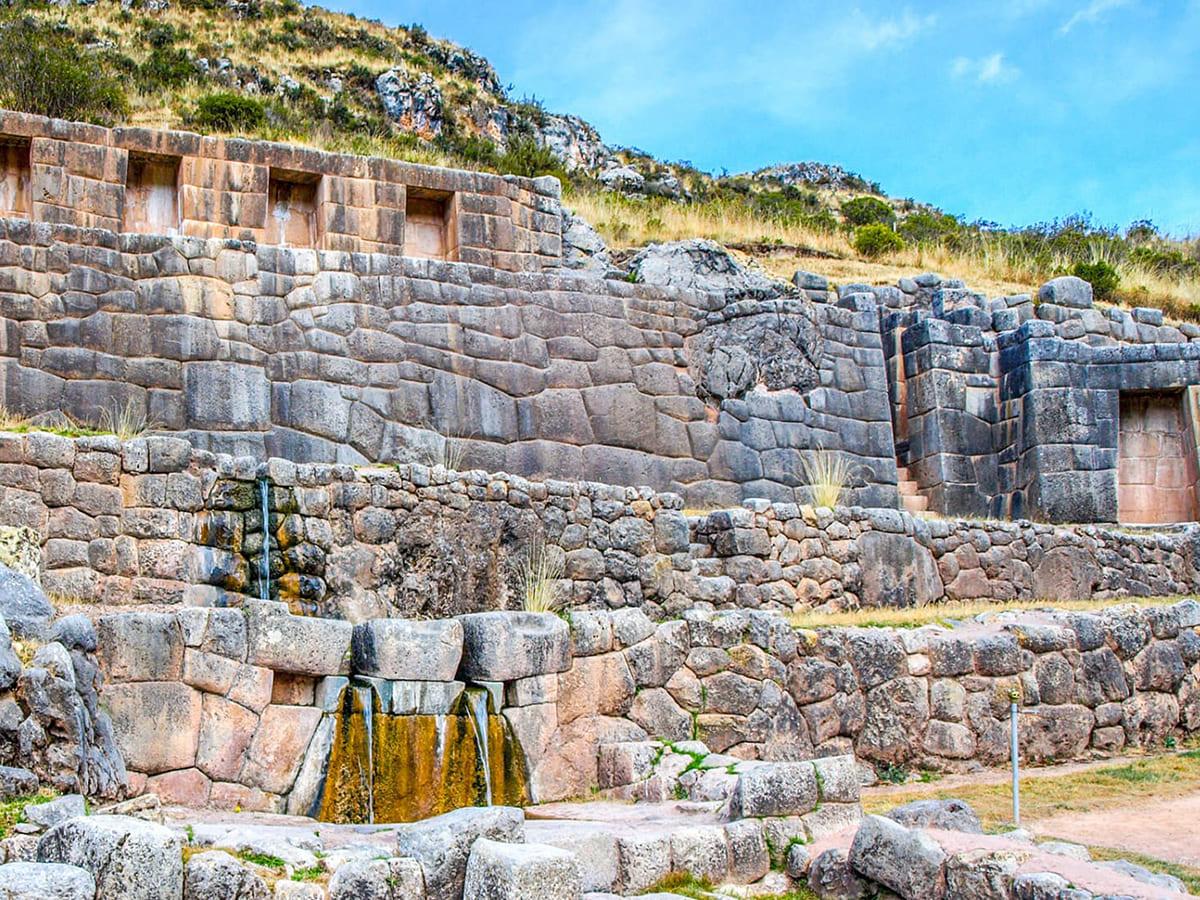
The archaeological complex of Tambomachay Cusco is also known as the ‘Baños de Inca’, and is one of the most important Inca constructions; this is due to the great mastery and the extraordinary assembly of the stones that form its walls.
Tambomachay Peru has an extraordinary hydraulic system. Two underground channels carved in detail in the rock, transport a constant flow of clean water, throughout the year; this comes from a pool located at a higher level, and pours its waters into a small stone pool located at the lowest level. This pool must have been a ceremonial source, in which the Inca and his court worshiped the water. The bathrooms of the Inca are very similar to the enclosures located in the city of Ollantaytambo .
Even now, specialists have not been able to determine the origin of the spring from which so clean and abundant waters flow. Some believe that they could come from the opposite bank of the river. The little noise of the flowing water makes you feel the peace in the environment; the peculiar shape of the space in which it was built gives Tambomachay an atmosphere of tranquility. In addition, it is one of the best examples of the ability of the Inca architects to preserve the harmony between the buildings and the landscape.
Tambomachay Ruins
The Tambomachay ruins are a group of stone structures, carved, formed by aqueducts, canals and waterfalls that come from wells and thermal springs nearby.
Architecturally speaking, Tambomachay Cusco consists of four walls or stepped terraces, which create three parallel platforms. In the last of them, a wall of 15 meters long by 4 high rises adorned by 4 niches. The blocks of stones have been fitted perfectly. The water reaches the lowest level through underground channels. In this place, two springs maintain a constant flow of clean water, which comes from another pool at a higher level. A similar system can be see in the staris of the fountains in Machu Picchu .
When observing the Tambomachay ruins from the river, there are two thick walls that cross the support wall. The one closest to the river has two large niches and the second, perpendicular to the first, has a double jamb door. This door was used by the Incas to highlight the importance of a building.

Where is Tambomachay Peru?
The Tambomachay ruins are located 7 km (15 min.) Northeast of Cusco, by paved road, and 1 km from Puca Pucara. It is located on the slopes of a hill near the main road to Antisuyo, on the Tambomachay River, very close to Sacsayhuaman .
Tambomachay History
The name Tambomachay is a combination of two Quechua words: ‘Tampu’, which means collective accommodation and ‘Mach'ay’, which means resting place. But, according to other chronicles, the meaning of the Word 'machay' in Quechua is 'caverns', which would describe the peculiar environment of the place in which these natural rock formations are appreciated, which according to the Inca’s traditions, were the object of veneration or magical practices.
The Tambomachay history says that it was considered one of the shrines of the first 'ceque' (huge imaginary lines, which served to organize sanctuaries and huacas in the surroundings of the Antisuyo, departing from the city of Cusco). The chronicles of the conquest say that Tambomachay Cusco was the hunting area of the Inca Yupanqui; so it follows that the place would be flooded with numerous animal species. It is possible that another of its functions would have been to provide water to the cultivation areas of the Inca site known as Puca Pucara.
When was Tambomachay Built?
It is estimated that the site of Tambomachay Peru was built between 1400 and 1480 AD. The place has an extension of approximately half a hectare and the material used for its construction was limestone with polygonal style rigging.
How to get to Tambomachay Cusco?
After flying from the capital of Perú , Lima, you will arrive in Cusco. To get to Tambomachay Peru from Cusco, you have 3 options:
Bus to Tambomachay
The bus to Tambomachay is very functional due to the short distance between Cuzco and Tambomachay, so the minibuses, for a cost of approximately 4 soles, in a route of only 20 minutes arrive at the destination, stopping at the entrance of Tambomachay Cusco .
Tambomachay to Cusco Walk
You can also take a walking tour that will take you about 2 hours. We recommend you take a bus to Tambomachay and then return from Tambomachay to Cusco walking , this way you can visit the ruins that are on the way from Puka Pukara, Qenqo and you can even get from Tambomachay to Sacsayhuaman walking.
Tambomachay Tour
The Tambomachay Tour is included in the city Tour of Cusco , which you can hire with any travel agency (almost all offer this type of service). These tours, mostly, offer breakfast and lunch, depending on the time you start, and include the Tambomachay entrance fee , this ticket includes a guided Tambomachay Tour and other services. These can cost $ 20 per person.

Other Tours in Cusco:
The famous Inca Trail Tours are the most popular excursions in Cusco - Peru; and considered among the best walks in the world.
- Salkantay Trek 5 Days
- Inca Quarry Trail 4 Days
- Machu Picchu 3 Day Hike
- 2 Day Inca Trail Tour
- 2 Day Inca Trail with camping
If you want to visit Machu Picchu, we recommend you to book your Machu Picchu Ticket in advance, so you will enjoy your Vacation in Machu Picchu without any problem.
When is the best season to visit Tambomachay?
The best season is to do it in the dry season, which covers the months April to the end of September. In October the rains begin and you can find Machu Picchu covered by clouds. If you travel in June, we recommend you to book the Inti Raymi 2020 Tour that takes place in June 24th, and also hike the Palcoyo Mountain Tour , which is an incredible Rainbow Mountain located in the Andes.
Tambomachay Entrance Fee
The Tambomachay entrance fee is included in the Tourist Ticket of Cusco. You can visit this site in the Schedule of Monday to Sunday from 7:00 a.m. to 6:00 p.m.
Tambomachay Altitude
Tambomachay Cusco is located on the side of a hill on the Tambomachay River, the Tambomachay altitude is 3700 masl. Due to the Tambomachay altitude , it’s locations on the slopes of a mountain and on the river of the same name, it is presumed that in the past there was abundant Andean fauna in the place.

Tambomachay Facts
Finally, here are 6 interesting Tambomachay Facts that you probably didn´t know:
- Tambomachay comes from 2 Quechua words: 'Tampu' (collective accommodation) and 'Mach'ay (resting place).
- There is located a platform that served as a liturgical source and, probably, of Inca baths.
- According to the Andean cosmovision, water was a source of life. It was believed that this symbolized the masculine and the earth (pachamama) the feminine reason why the union of both caused the fertility.
- Although it is not known for sure exactly where the water that flows in their channels comes from, these constructions continue to flow water after 600 years
- Due to the height of its walls (up to 2 meters), it is presumed that they also served as defense against possible enemy attacks.
- You can get from Tambomachay to Huchuy Qosqo , taking a path that starts from the same archaeological center and leads to the Sacred Valley . The trek lasts approximately 7 hours.
The property, complete with a 30-seat screening room, a 100-seat amphitheater and a swimming pond with sandy beach and outdoor shower, was asking about $40 million. Lorem ipsum dolor sit amet, consectetur adipis Vi ales elit vitae lo bortis faucibus. Lorem ipsum dolor sit amet, conse dolor sit amet, consectetu ctetur adipis Viales. Lorem ipsum dolor sit amet, cons sit amet, consectetur adi ectetur adipis Vi.

It is a long established fact that a reader will be distracted by the readable content of a page when looking at its layout. The point of using Lorem Ipsum is that it has a more-or-less normal distribution of letters, as opposed to using 'Content here, content here', making it look like readable English. Many desktop publishing packages and web page editors now use Lorem Ipsum as their default model text, and a search for 'lorem ipsum' will uncover many web sites still in their infancy.
“To take a trivial example, which ever undertakes laborious physical work exercise, except obtain some advantage blinded”

as opposed to using 'Content here, content here', making it look like readable English. Many desktop publishing packages and web page editors now use Lorem Ipsum as their default model text, and a search for 'lorem ipsum' will uncover many web sites still in their infancy.
- Tierras Vivas Blog
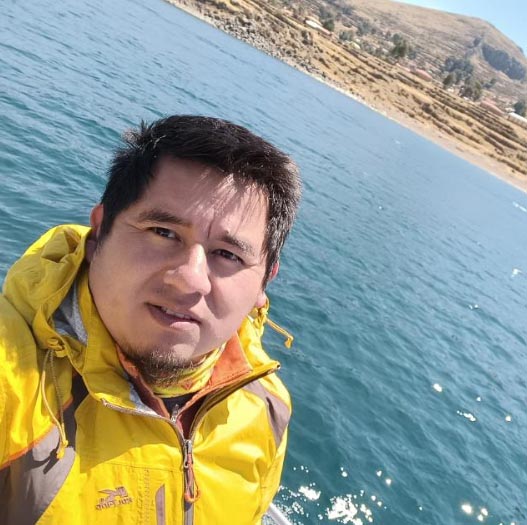
Edwin Caviedes Profesional guide
Edwin Caviedes is the founder and manager of Tierras Vivas, a company that benefits native people communities.
Previous Post
Patacancha Village
Salkantay Trek vs Inca Trail

Relson Dulux
Hello, We’re content writer who is fascinated by content fashion, celebrity and lifestyle. We helps clients bring the right content to the right people.
All Categories
- Manage Listings
- Address and Map
- Reservation Requests
- Your Reservation
- Search Results
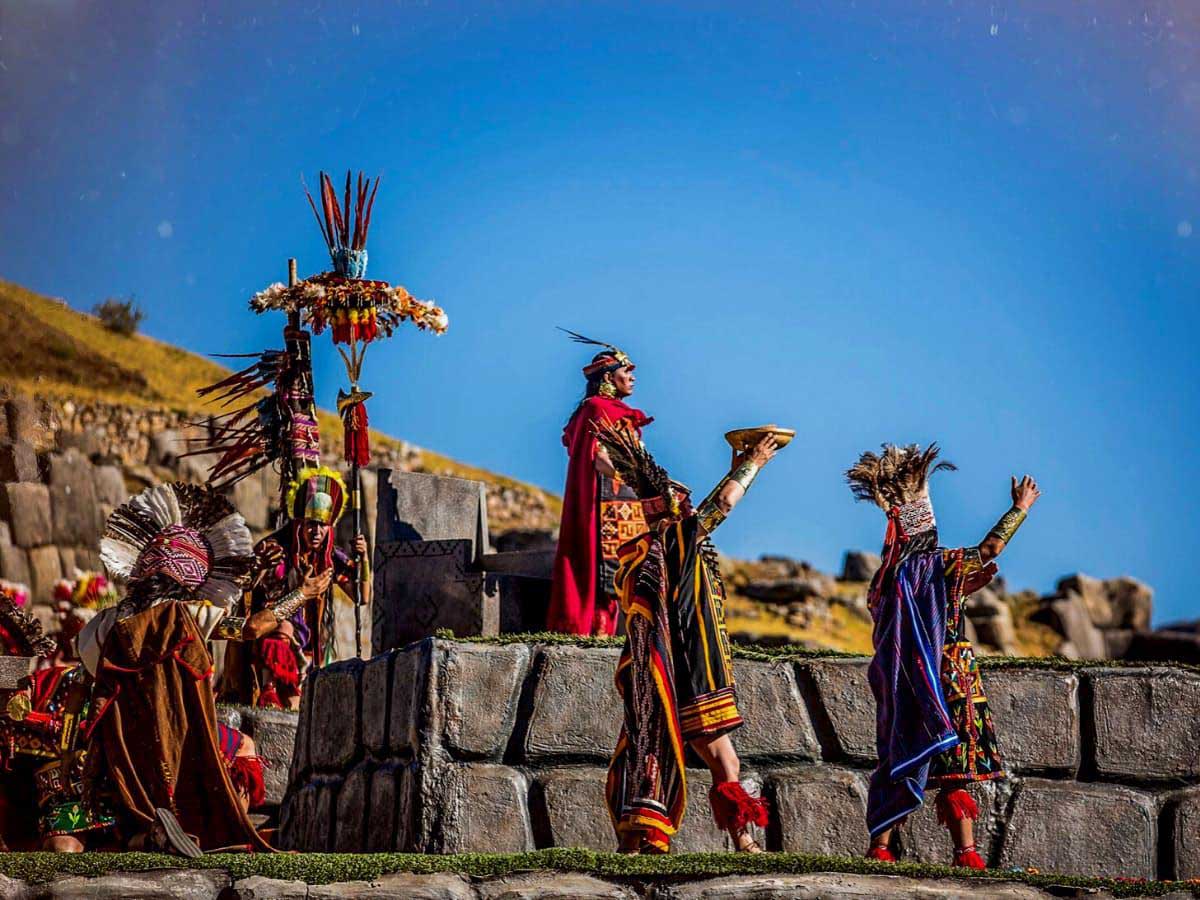
Condor Bird in Peru: The largest bird in the world
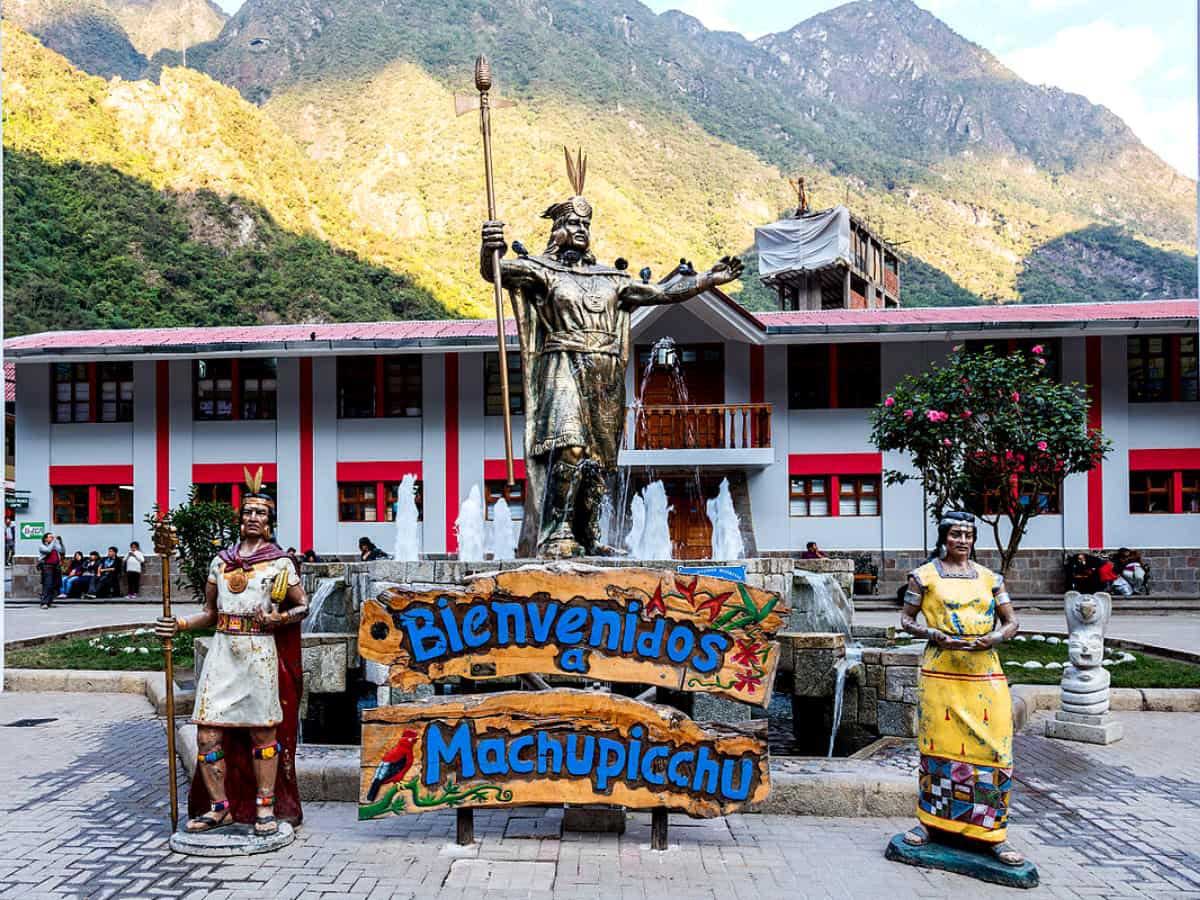
Aguas Calientes: Everything you need to know before to visiting Machu Picchu village
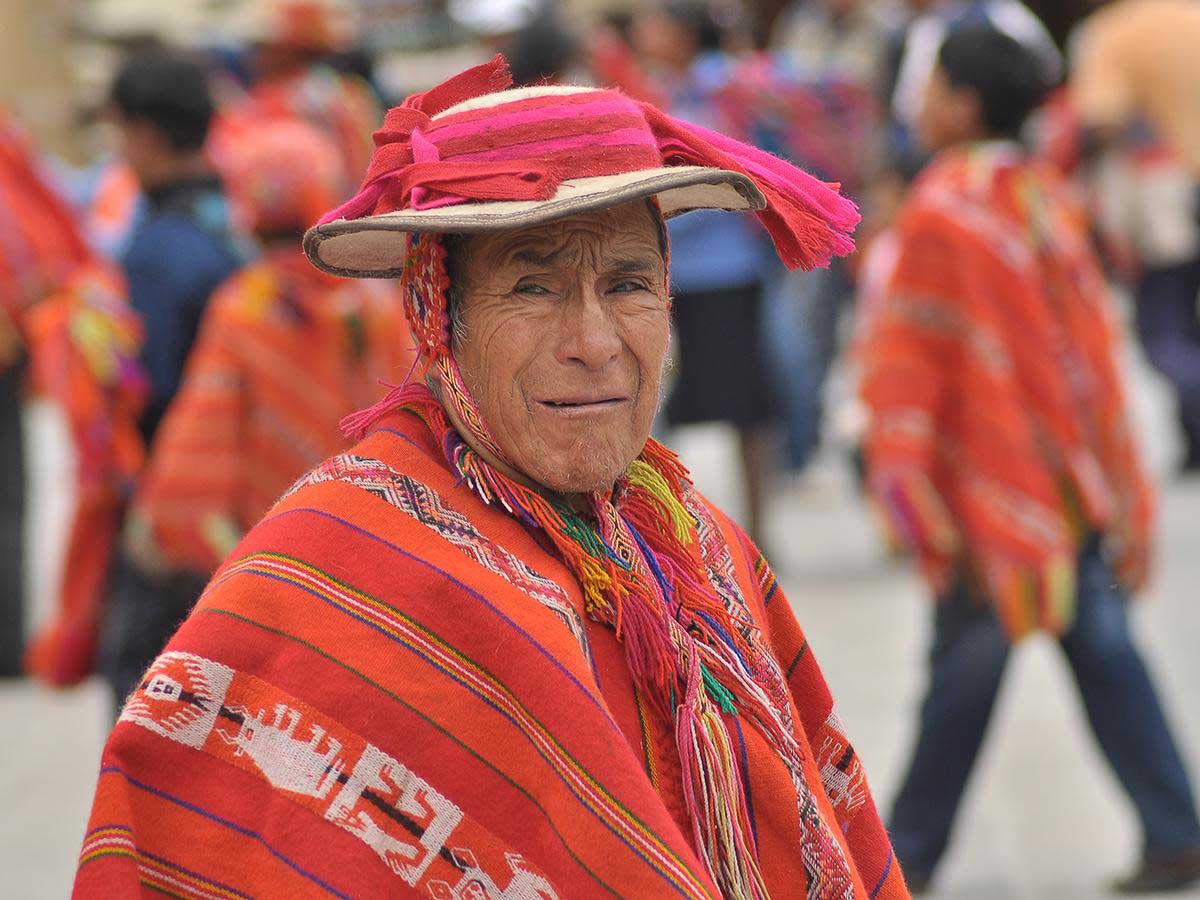
Traditional Peruvian Clothing
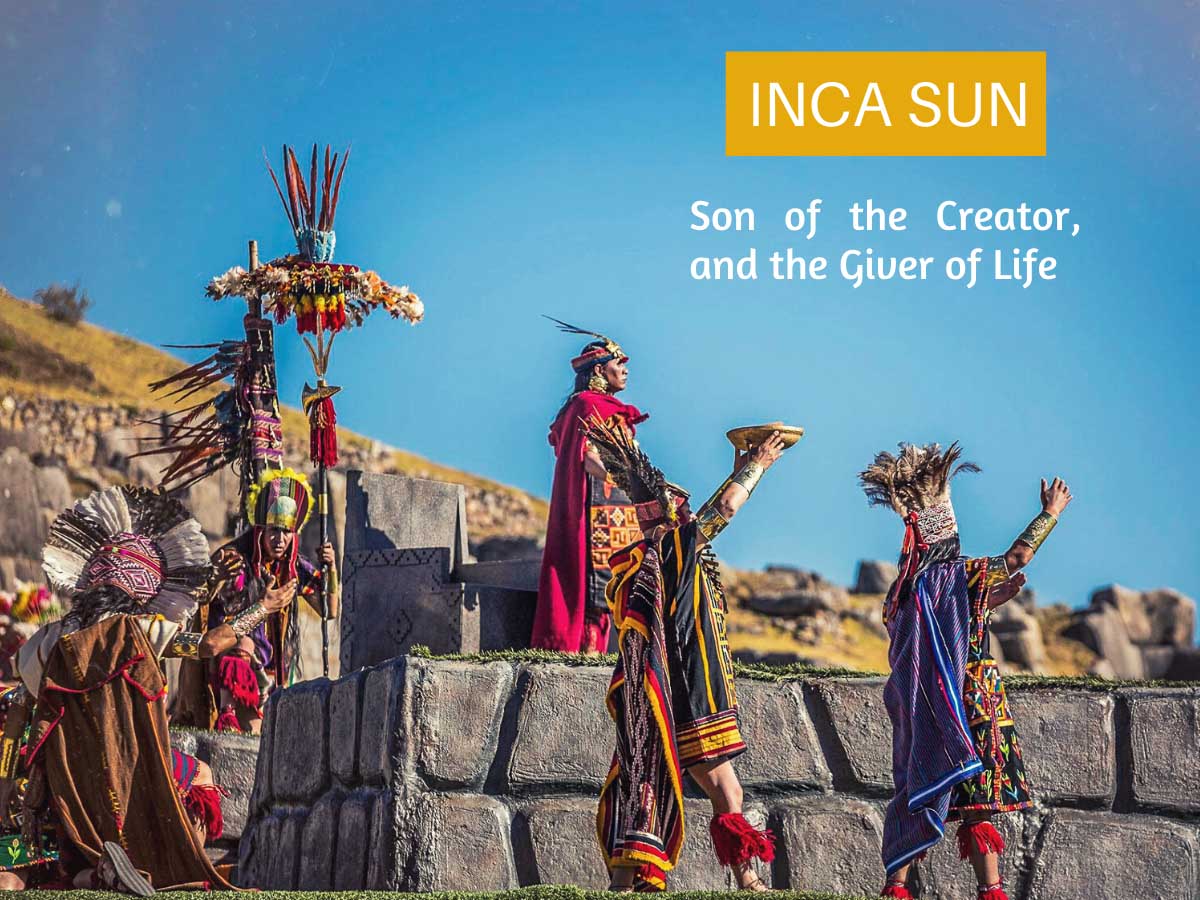
Inca Sun God
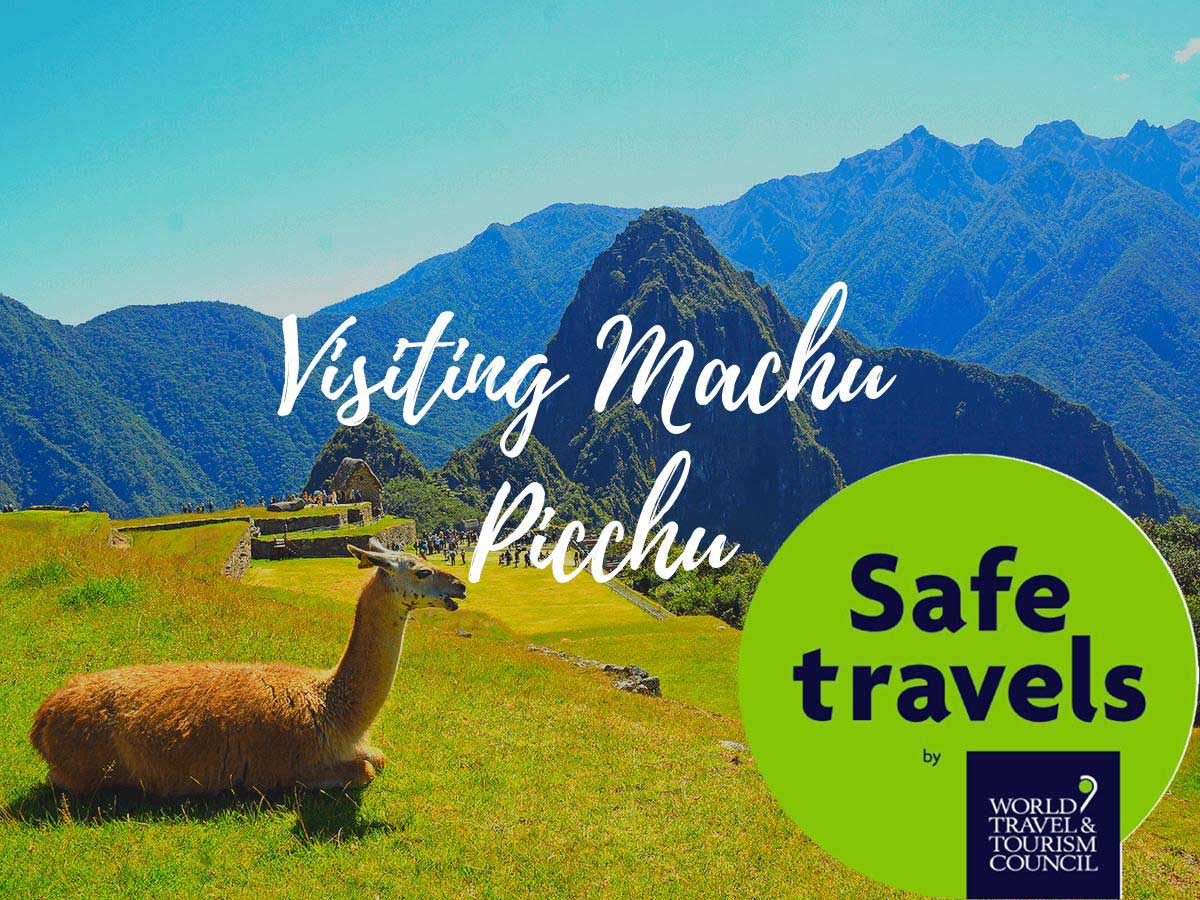
Machu Picchu to Close: Ultimate Upgrade 2024
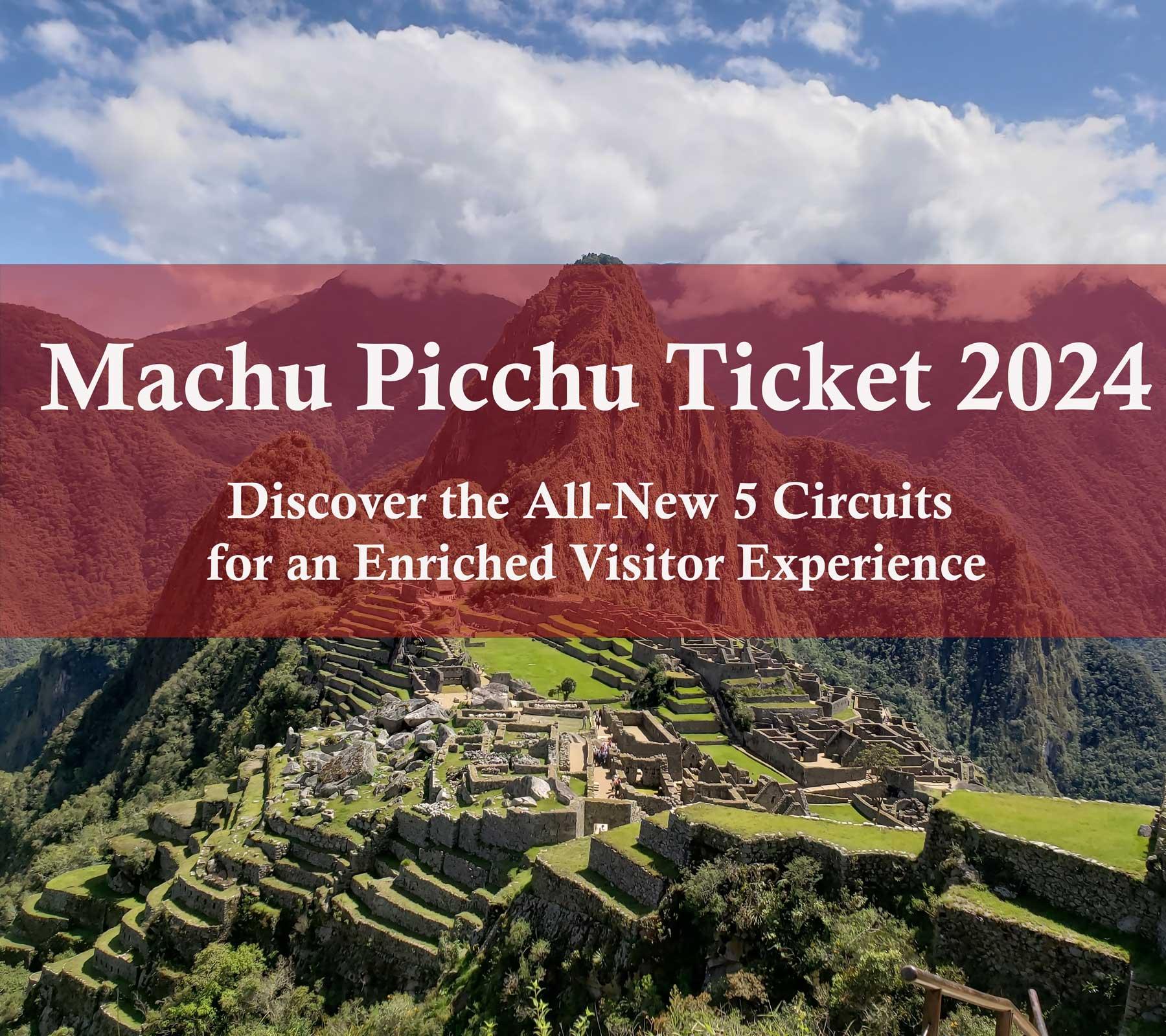
Machu Picchu Circuits: New Tickets 2024 Official Website
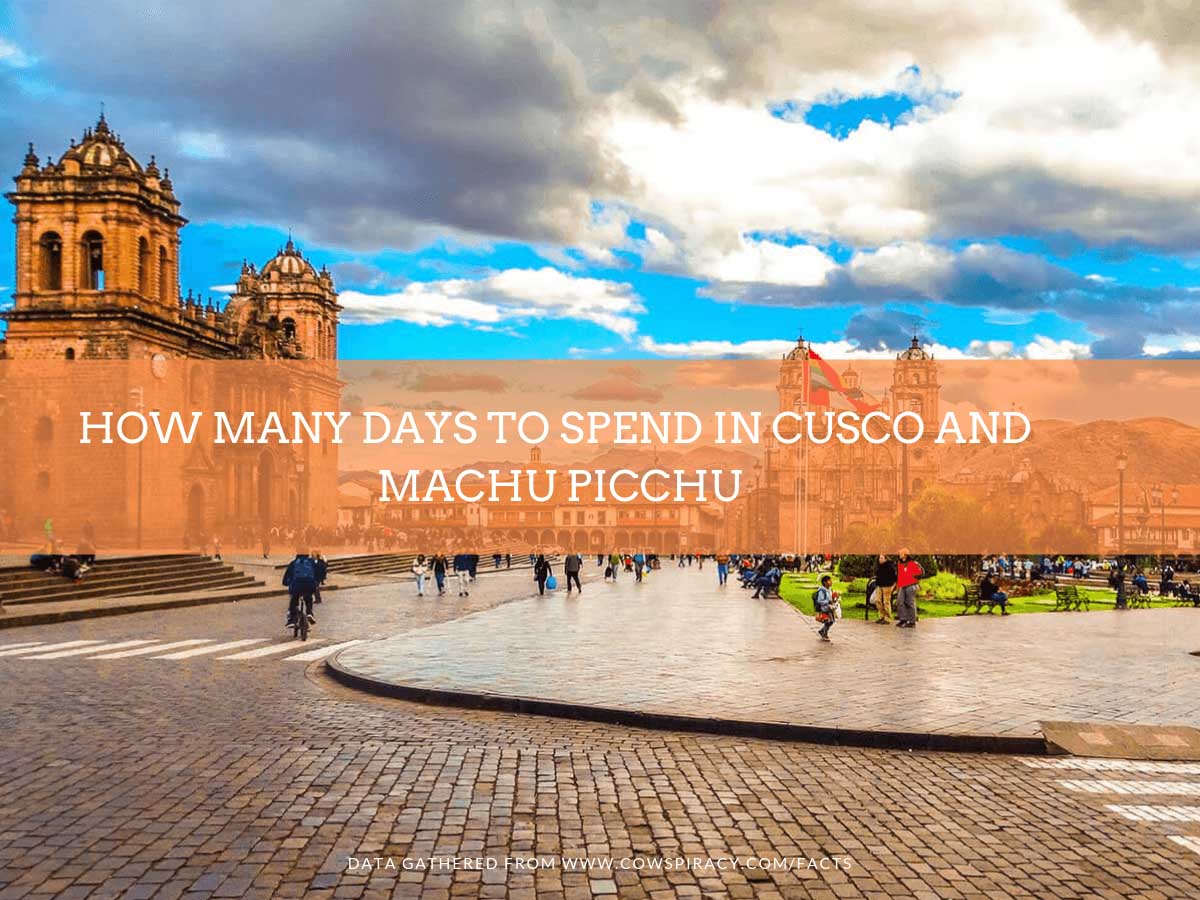
How Many Days to Spend in Cusco and Machu Picchu
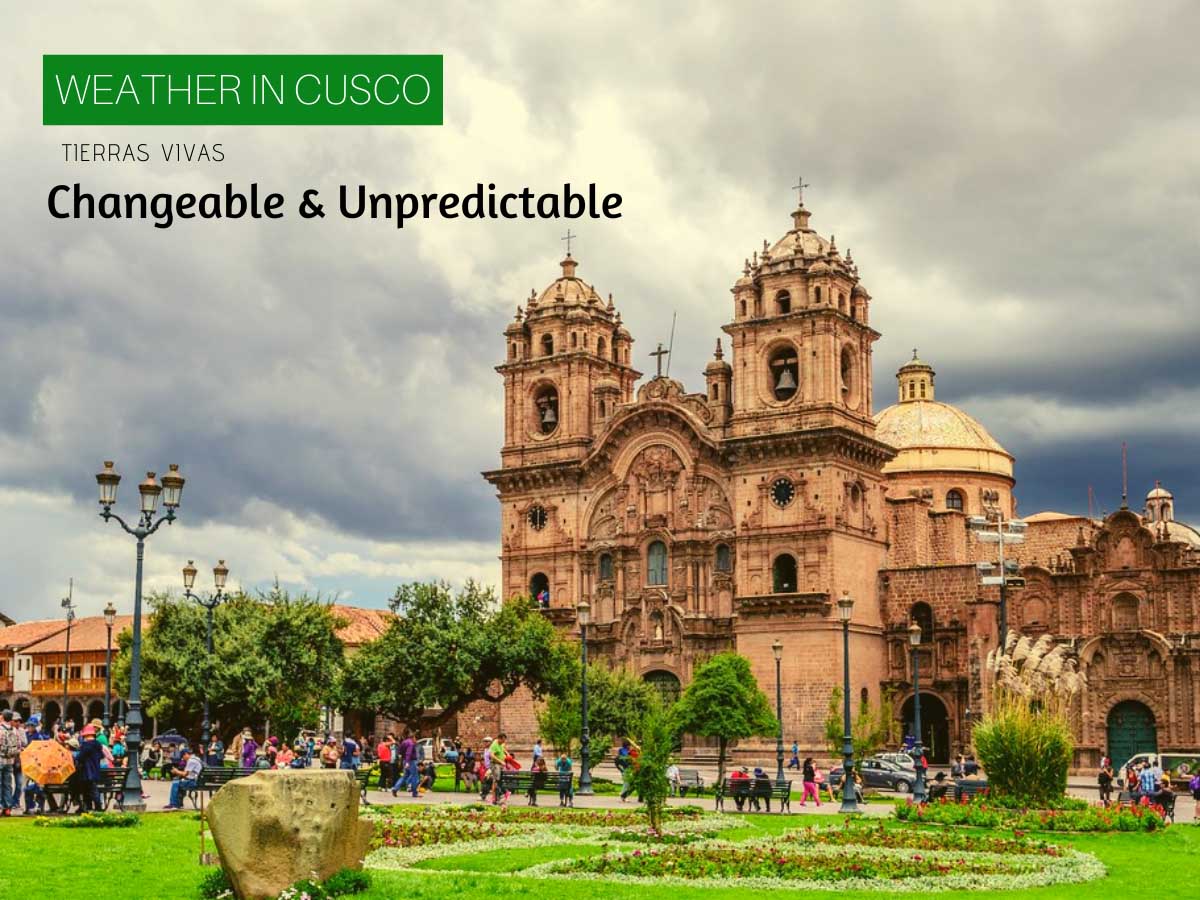
Cusco Peru: How Is the Weather and What Type of Climate Does It Have?
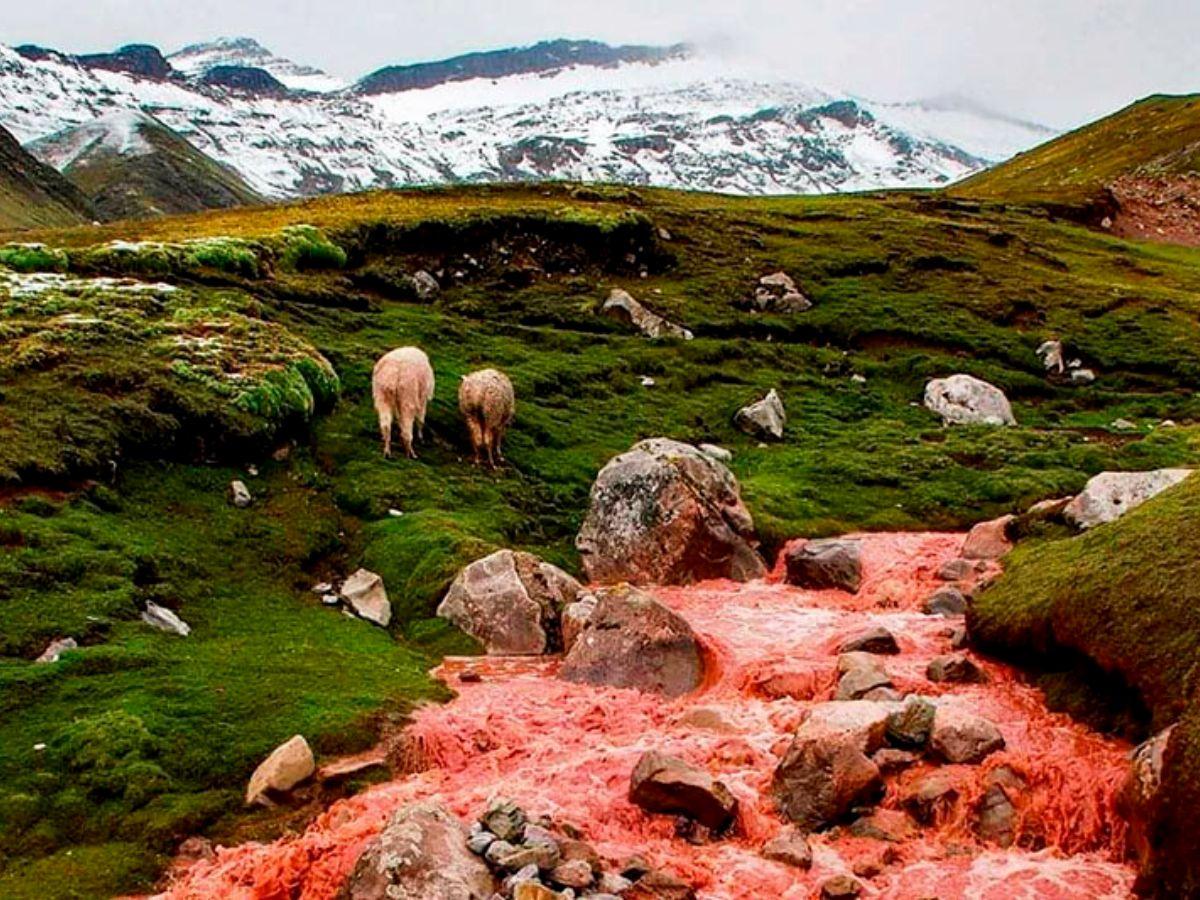
The unique red river of Cusco, Peru
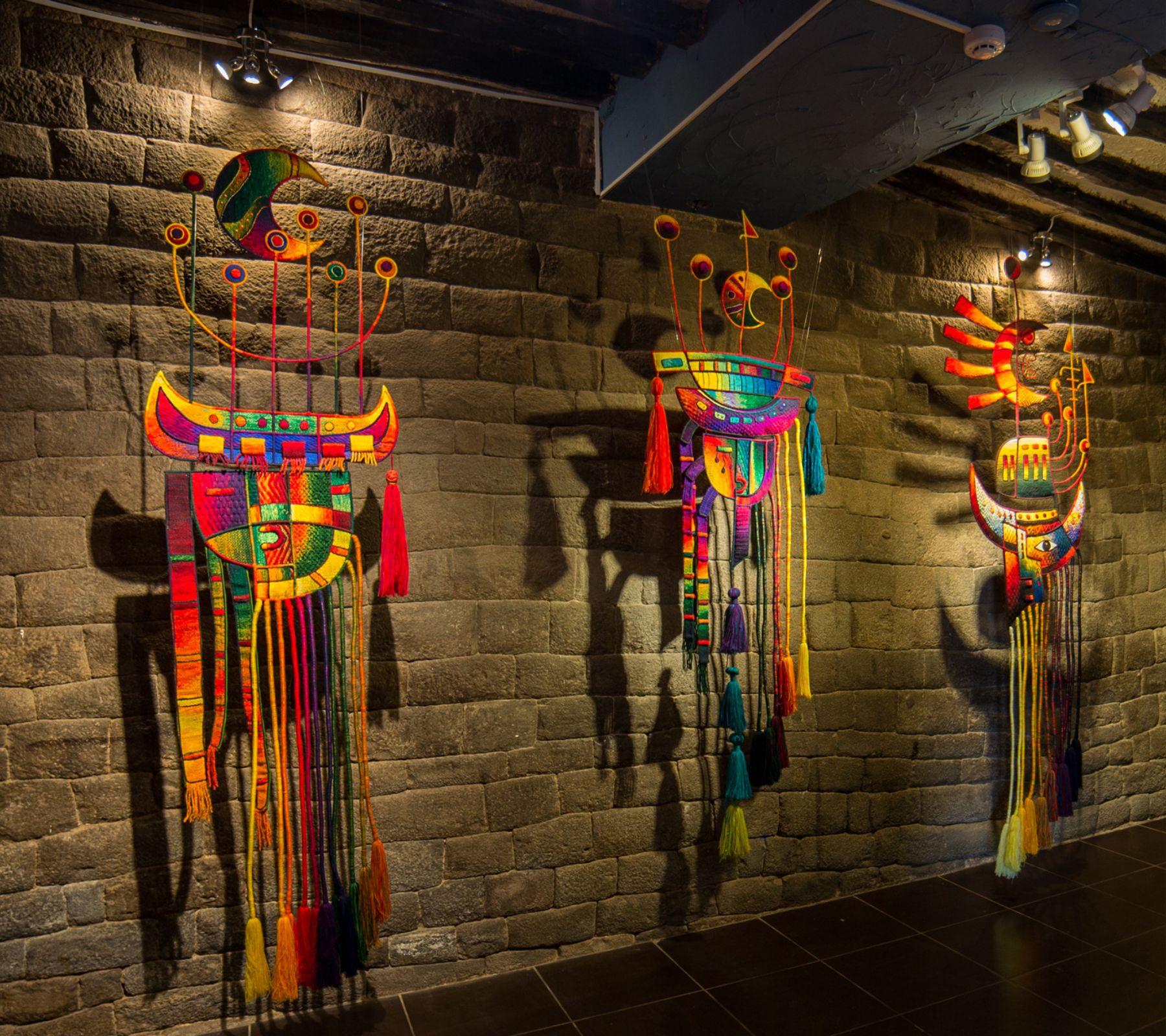
Maximo Laura Museum
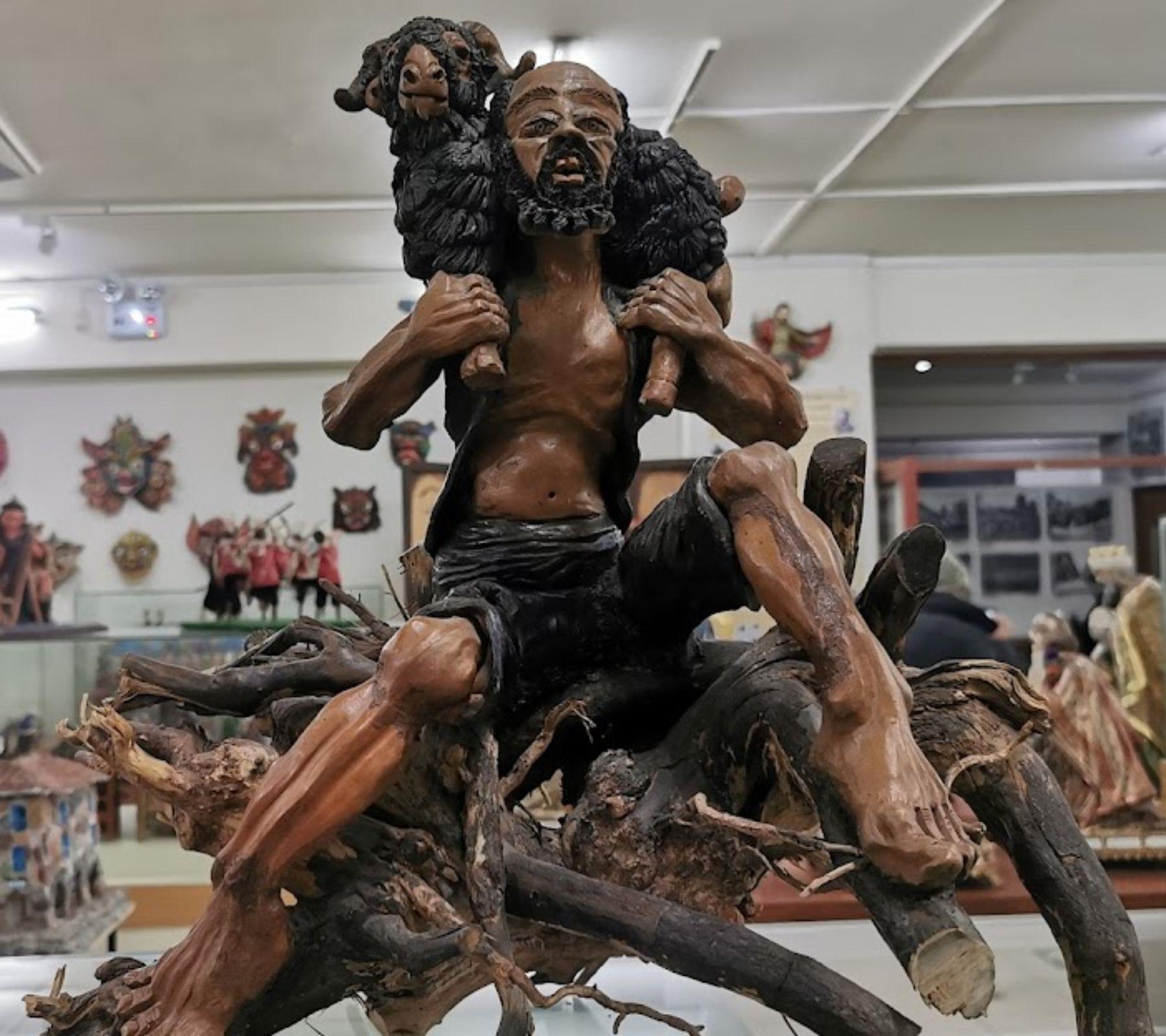
Cusco Museum of Popular Art
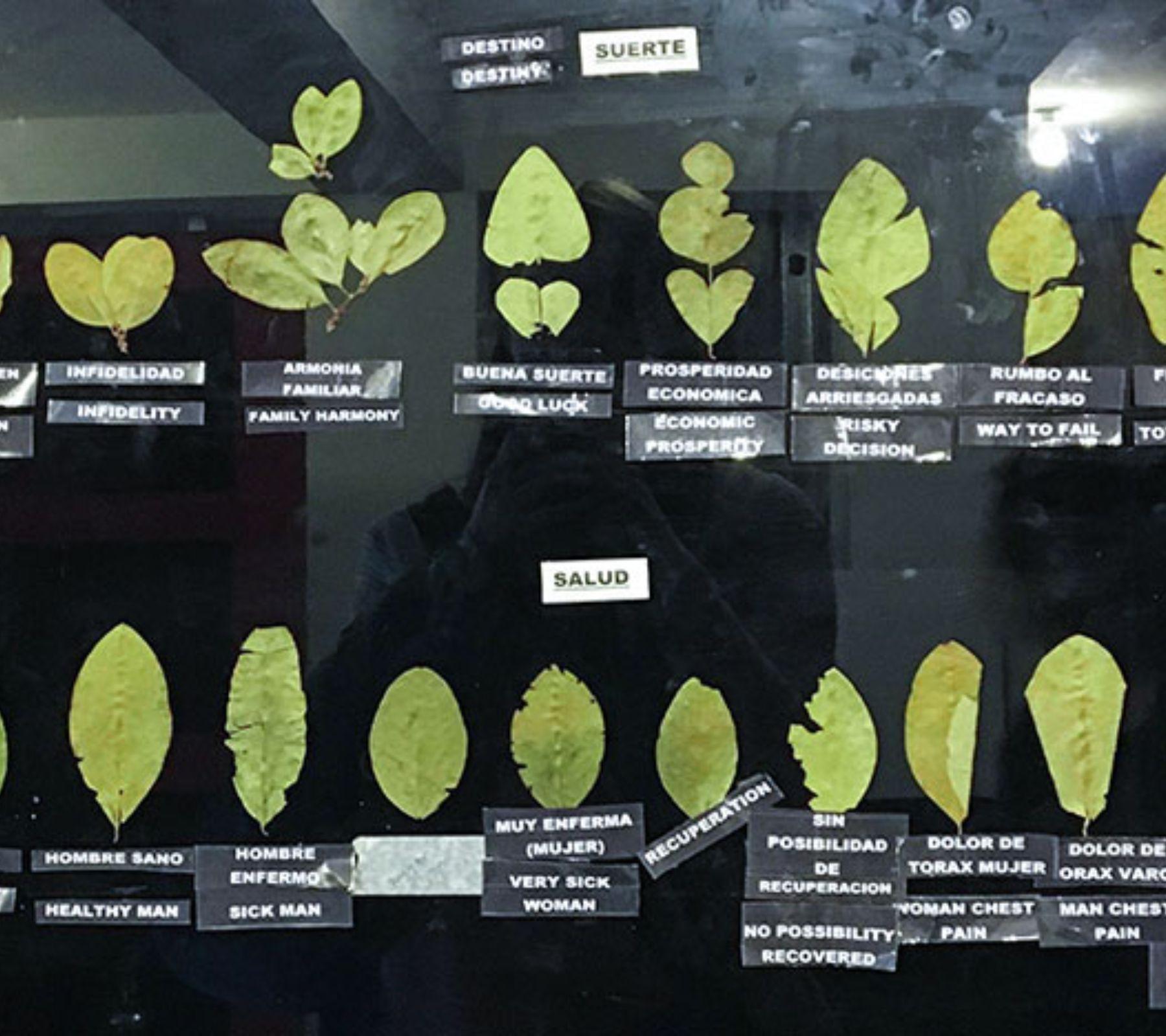
Coca Museum

Cusco Museum of Religious Art
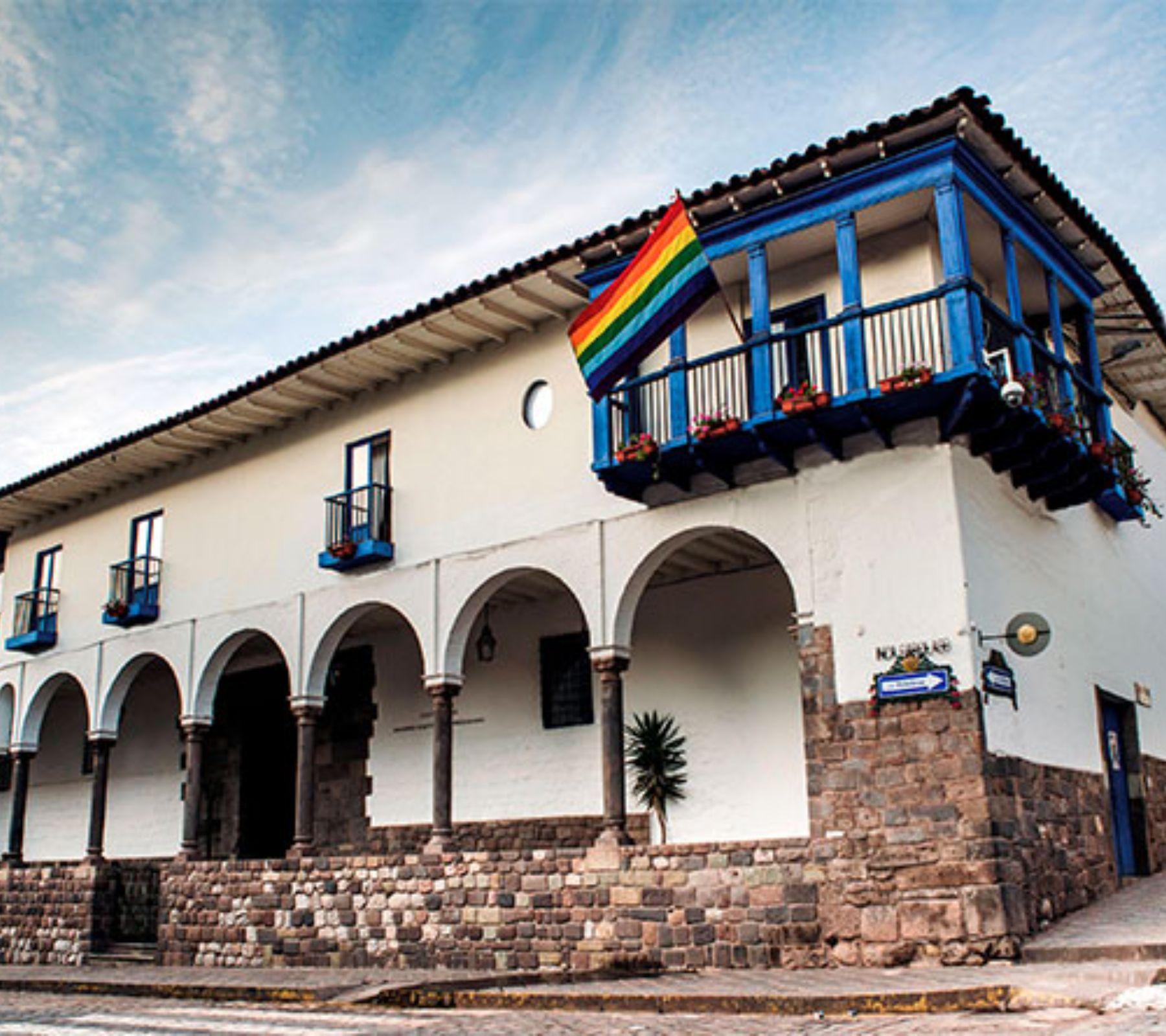
Regional Historical Museum of Cusco House of the Inka Garcilaso de la Vega
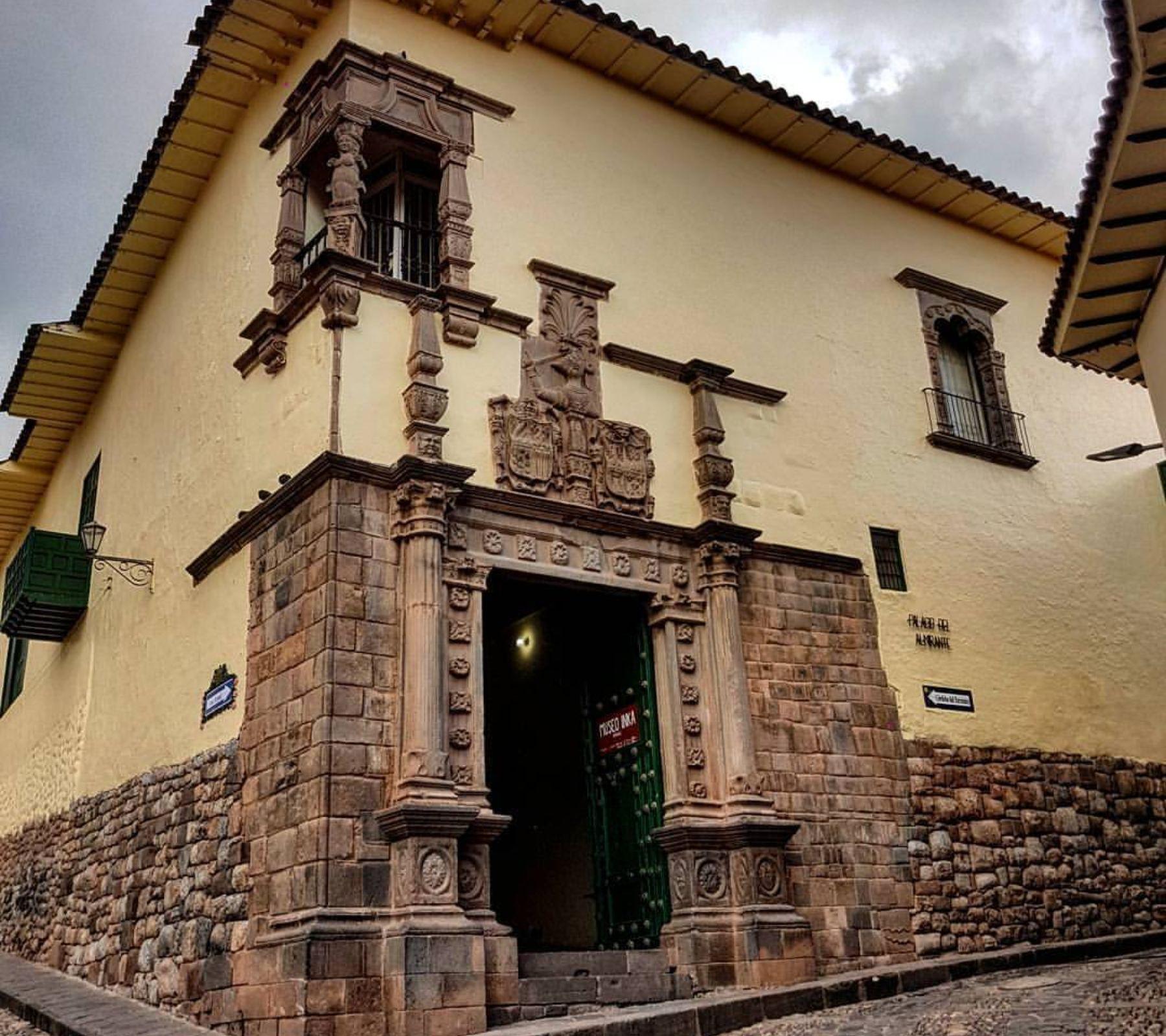
Admiral's Palace - Inka Museum
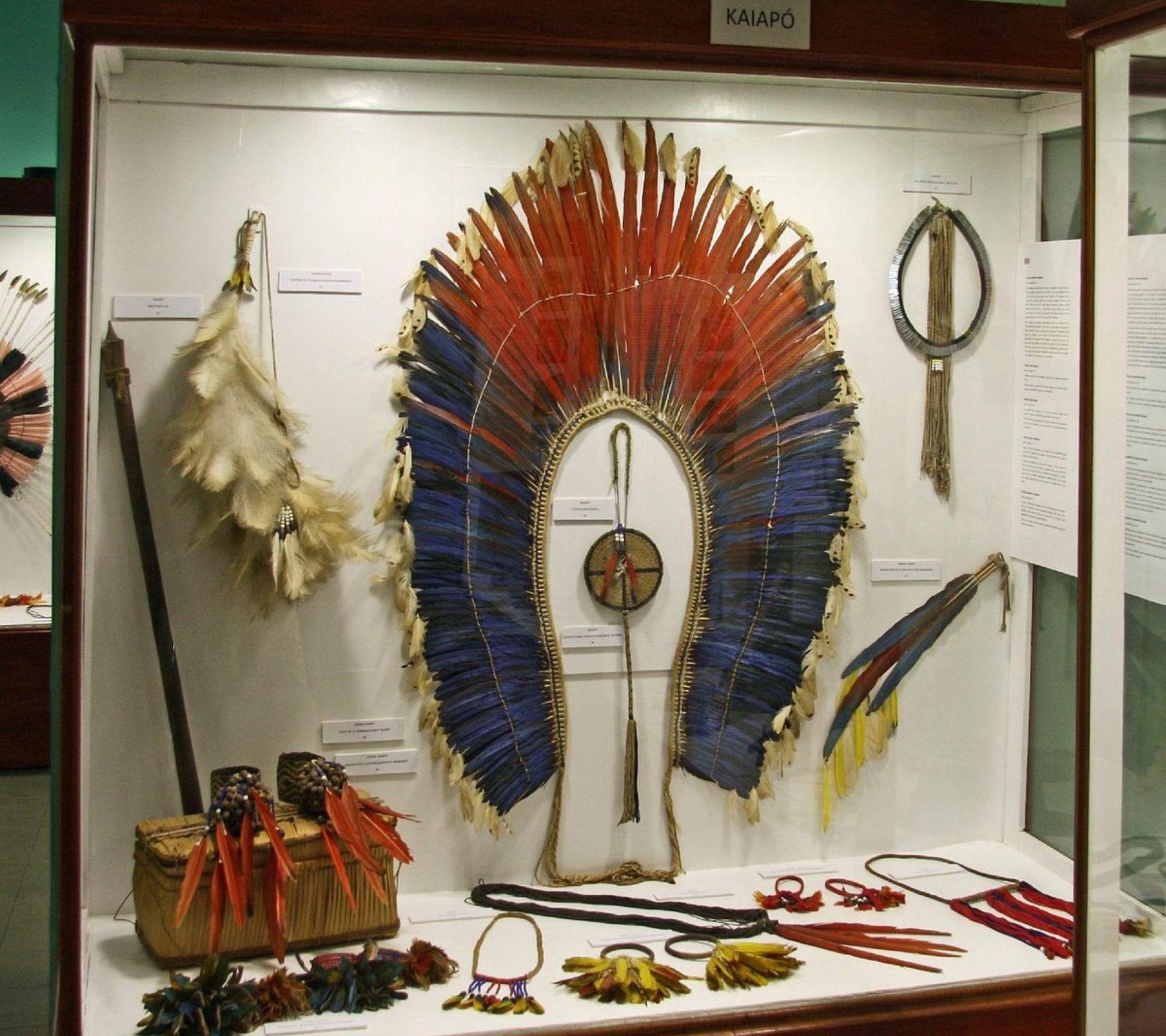
Amazon Museum
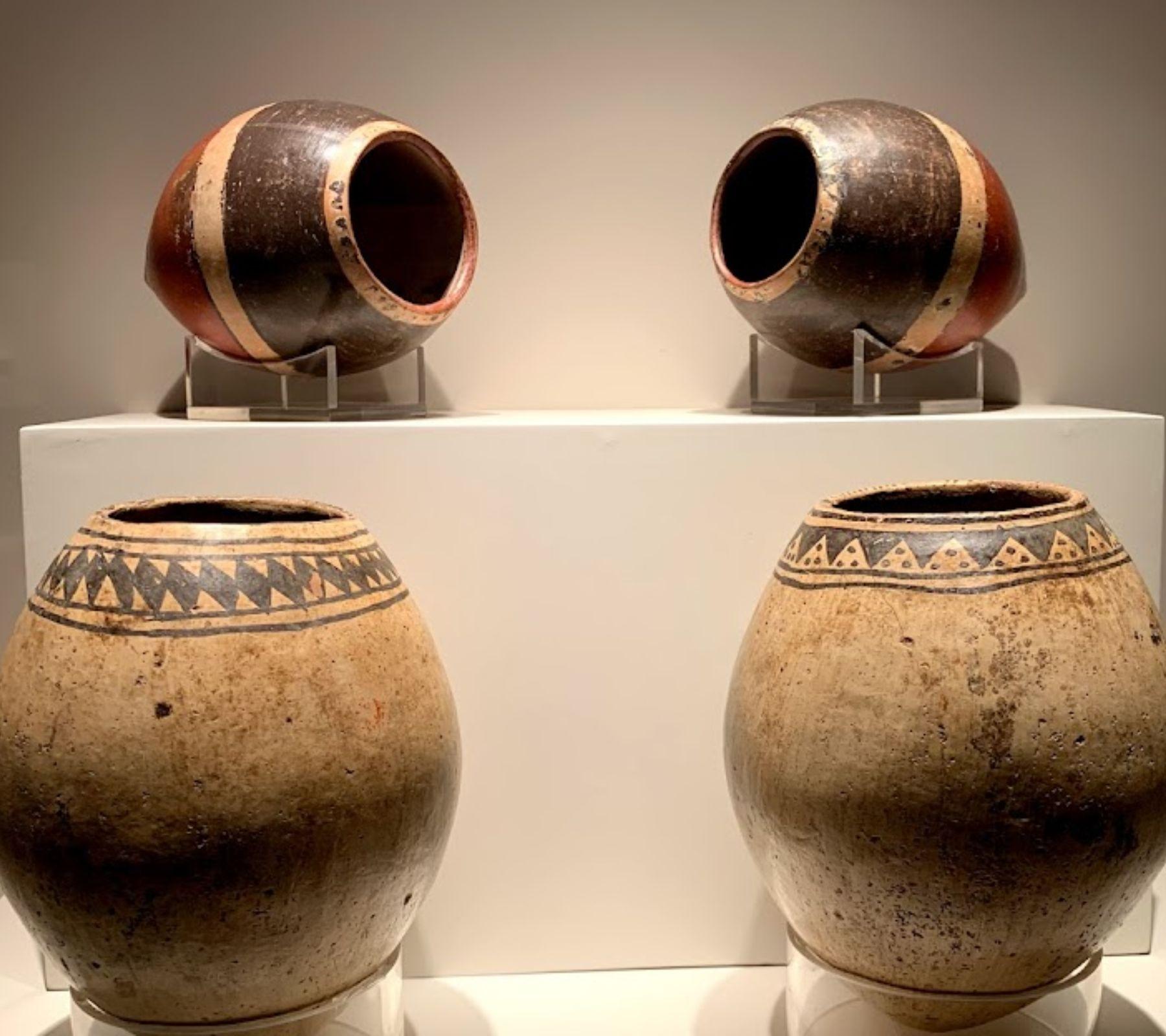
Pre-Columbian Art Museum
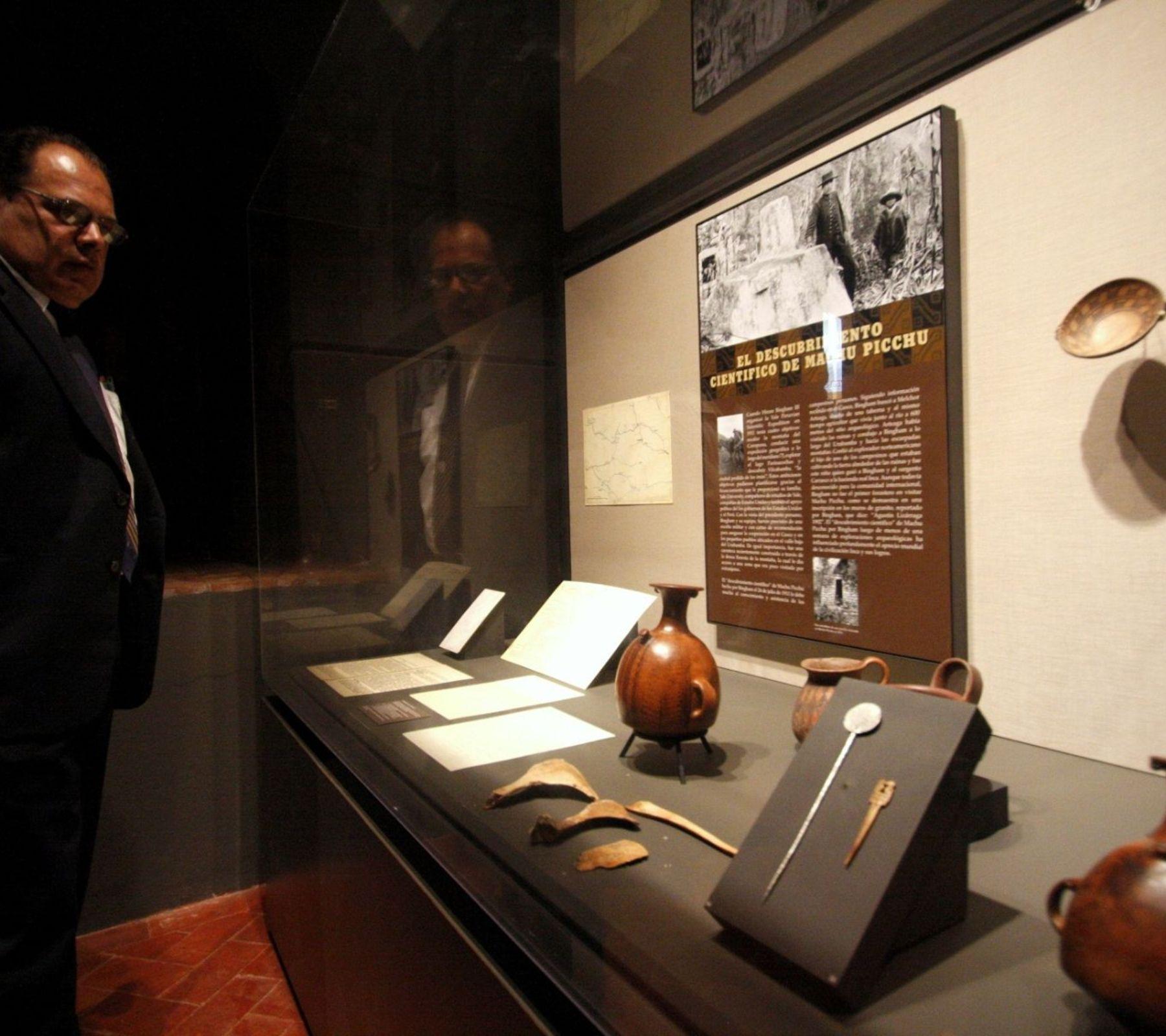
Machu Picchu Museum at Casa Concha
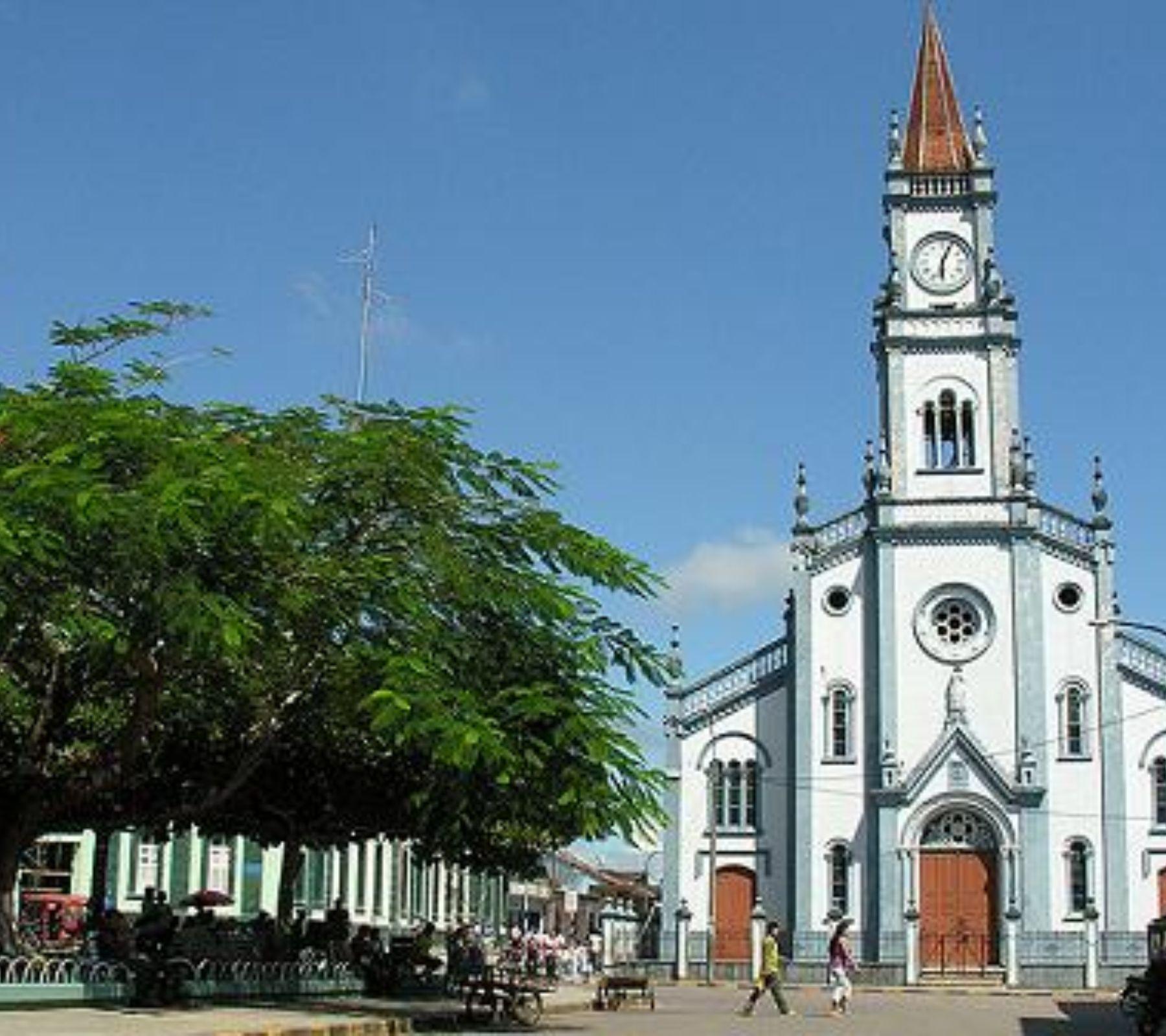
Yurimaguas City
Top destinations, explore top destinations.
Tierras Vivas Travel offers the best all-inclusive Inca Trail to Machu Picchu tours in Peru.
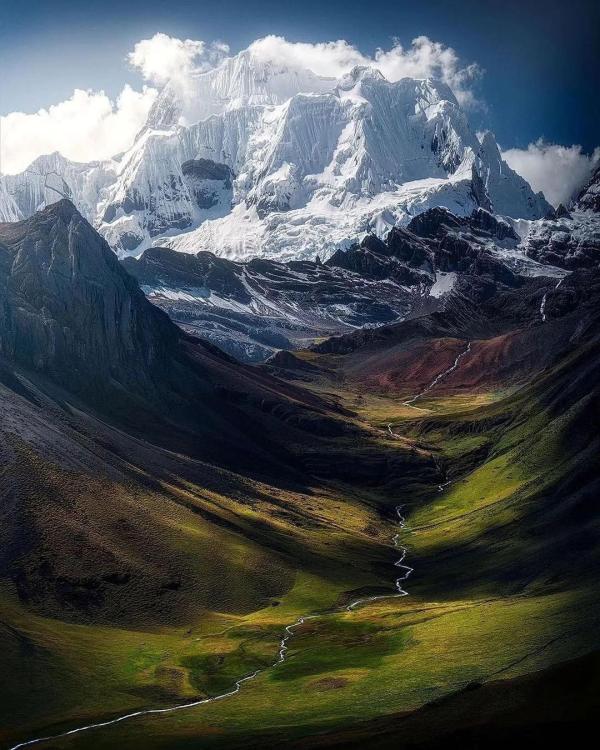
Trekking & Hiking
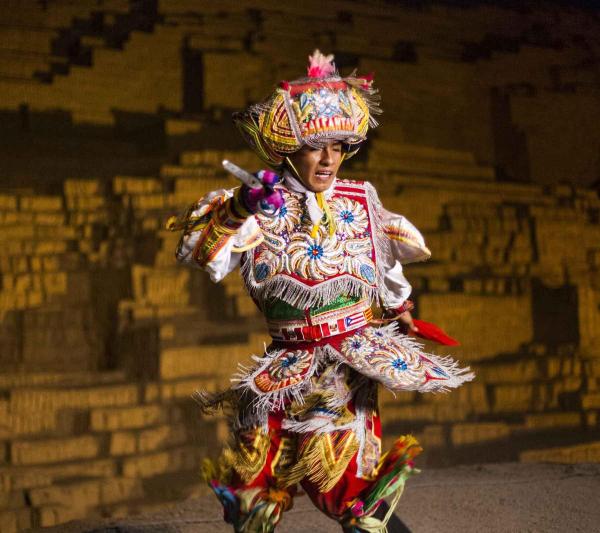
Culture / History
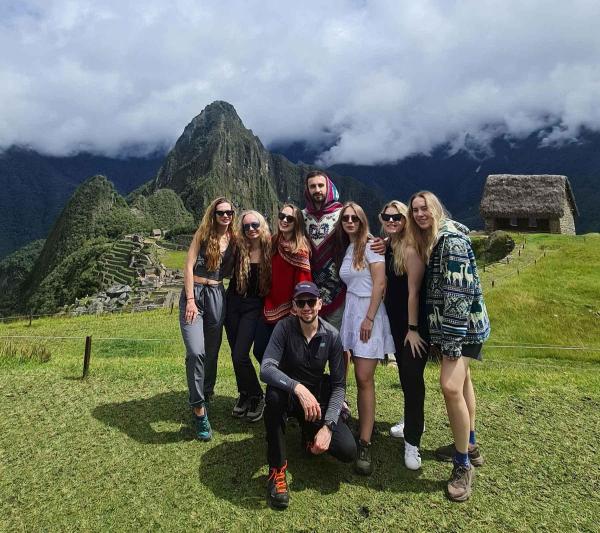
Adventure Holidays
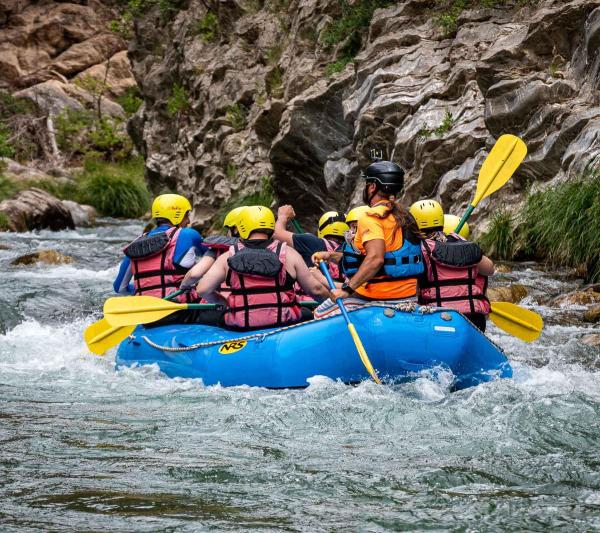
Mixed-Adventure Tours
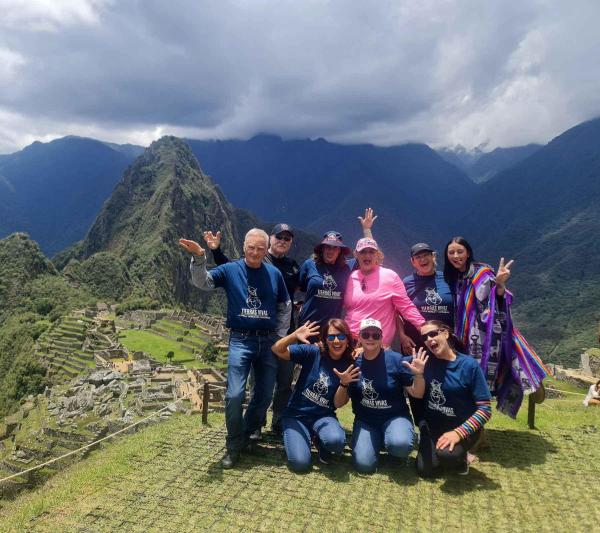
Family Travel
Don't have an account? Register
Already have an account? Login
Cusco on the cheap: Tambomachay to Cusco Walk
Updated July 2024, Cusco on the Cheap: Tambomachay to Cusco Walk was originally written in April 2017 .
In May 2016, my best friend Tay and I set out for our first time to South America for a trip that would take us through Bolivia and Peru. The Tambomachay to Cusco walk was the first-day trip we did while staying in Cusco.
Cusco: Peru’s biggest tourist trap
And I don’t necessarily mean that in a bad way: Cusco is your jumping-off point for your Sacred Valley adventures.
All over Cusco, you’ll see tour operators selling ‘Cusco City Tours’ that include stops at Tambomachay, Pukapukara, Q’enqo, and Sacsayhuaman. But did you know you can do this tour on your own for next to nothing (aside from the cost of your Boleto Touristico, of course).
Though, if you don’t want to deal with the logistics of setting up any tours in and around Cusco, check out the different day tours around Cusco by Exploor Peru.
Heading to Machu Picchu too? Don’t miss my guide to the wonder of the world
Need Travel Insurance and Evacuation Services for Peru?
Start shopping for travel insurance plans over at IATI Insurance . Readers of the Adventures of Nicole get a 5% discount off your plan.
The Adventures of Nicole partners with Global Rescue to offer the world’s leading medical evacuation and security advisory services. To travel with peace of mind, shop evacuation coverage at Global Rescue .
Boleto Touristico
First things first: you need a Boleto Touristico (Cusco Tourist Card) to enter the sites. There are reports online of travelers visiting the four archeological sites before 6:30 am and entering without it… I’m not a morning person, so I opted to pay for it. Not to mention, you need this card to get into 16 sites around the Sacred Valley including:
- Sacsayhuaman
- Tambomachay
- Ollantaytambo
- Museo Siteo Qoricancha
- Museo de Arte Contemporaneo
- Museo de Arte Popular
- Museo Historico Regional
- Monumento Pachacutec
- Centro Cusco de Arte Nativo
The Boleto Touristico will set you back S/130 (~$40USD). Yeah, I know it’s spendy, but this gets you into 16 sites and is good for 10 days… Your only other option is to pick up a partial ticket, each one of these will cost you S/70. So if you plan to see more than one group of these sites it makes sense to just purchase the full ticket.
Partial Boleto Touristico Cards
- Sacsayhuaman, Q’enqo, Tambomachay, and Pukapukara. Valid for 1 day.
- Museo Historico Regional, Museo de Arte Contemporaneo, Museo Siteo Qoricancha, Centro Cusco de Arte Nativo, Monumento Pachacutec, Pikillacta & Tipon. Valid for 2 days.
- Pisac, Ollantaytambo, Chinchero & Moray. Valid for 2 days.
Where to buy a Boleto Touristico
You may purchase your Boleto Touristico at COSITUC office on 103 Avenida del Sol in the center of Cusco, or at any of the sites listed on the ticket.
Exchange rate: S/3.80 Peruvian Soles to $1 US Dollar as of June 2024
Don’t want the hassle of doing it yourself? Book this Tambomachay to Cusco city tour for $54 USD!
The Tambomachay to Cusco walk
How to get to tambomachay.
Tambomachay is the furthest site from Cusco- it sits 8 kilometers (~5 miles) from Plaza de Armes in Cusco, mostly uphill.
Option 1: Take the bus (Cheap)
Take ‘ Servicio Rapido ‘ Bus from the city center to university- Cost: S/.70.
From the University: Take ‘ Señor Del Huerta ‘ Collectivo from the university to Tambomachay- Cost: S/2.
Grand Total? Less than $1 USD
Option 2: Take a taxi (Expensive)
Taking a taxi from Cusco’s city center to Tambomachay should set you back about S/20 (with some strong haggling).
Option 3: Walk (Free)
If you’re bound and determined, want some exercise, or just too flat broke for the S/2.70 for the buses, you could realistically lace up them shoebaru’s and march up the 8k to Tambomachay and then walk the 8k more to get back to Cusco.
Wanna hike the Rainbow Mountain? Check out this post for all my tips and tricks
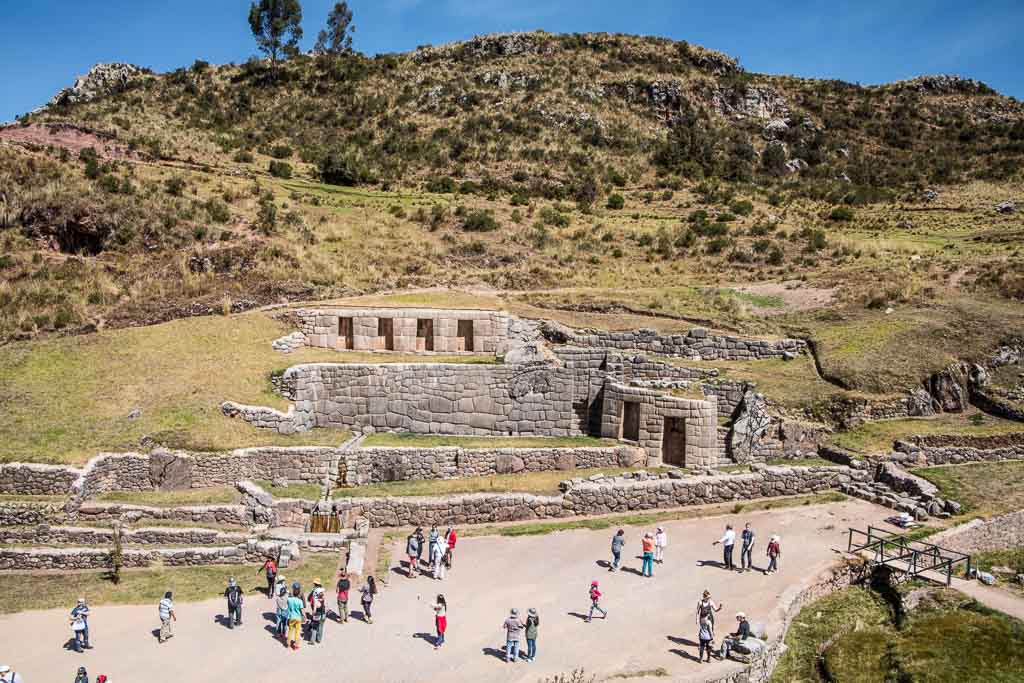
Stop #1: Tambomachay
In Quechua Tambomachay means ‘guesthouse cave’. Archeologists are still a little stumped as to what the purpose of this site was exactly. Three theories are that it was a temple for water, a spa for Incan politics, or a defensive outpost. Whatever its original purpose was, have a look around at its intricate canals, aqueducts, and waterfalls that run through its terraced rock.
Once you are finished taking a gander at Tambomachay walk back out towards the road, hang a right when you get back to the main road and walk about 300 meters give or take and you’ll arrive at Pukapukara. It will be on the opposite side of the road.
Stop #2: Pukapukara
Pukapukara’s stones you will notice have a reddish color to them. As such, the Quechua decided to derive its name from its red color particularly at sunset, Pukapukara means ‘red fortress’. This is yet another Incan archeological site that doesn’t have a clear answer as to its original purpose.
The likely theory is that it was built during the reign of Pachacutec as a military headquarters. From Pukapukara make sure to take some time to look at the views down into the surrounding jungle.
After you’ve finished taking in the views from Pukapukara, it’s time to move on down the hill to Q’enqo. It’s a nice gradual walk downhill to Qenqo from Pukapukara, although it’s a somewhat long one at 4.7k or 3 miles.
If you aren’t feeling up to walking, or it starts to rain on you, you can always opt to take the Señor Del Huerta Collectivo down to Q’enqo. It shouldn’t set you back much more than S/1, from reports online (I opted to walk as it was a very nice warm day.) You can expect one of the collectivos to pass in that direction roughly in 10-minute intervals.
Exploring further in the Sacred Valley? Don’t miss the Maras Salt Mines

Stop #3: Q’enqo
Q’enqo is one of the largest wak’as (holy place) around the region of Cusco. Its name means ‘labyrinth’ in Quechua, although it is unknown what Q’enqo’s original name was. Archeologists believe this was a site where death rituals took place.
After Q’enqo you will go back out to the main road and continue on down back toward Cusco for roughly 1.7k (about 1 mile). Your next stop will be quite obvious to spot.
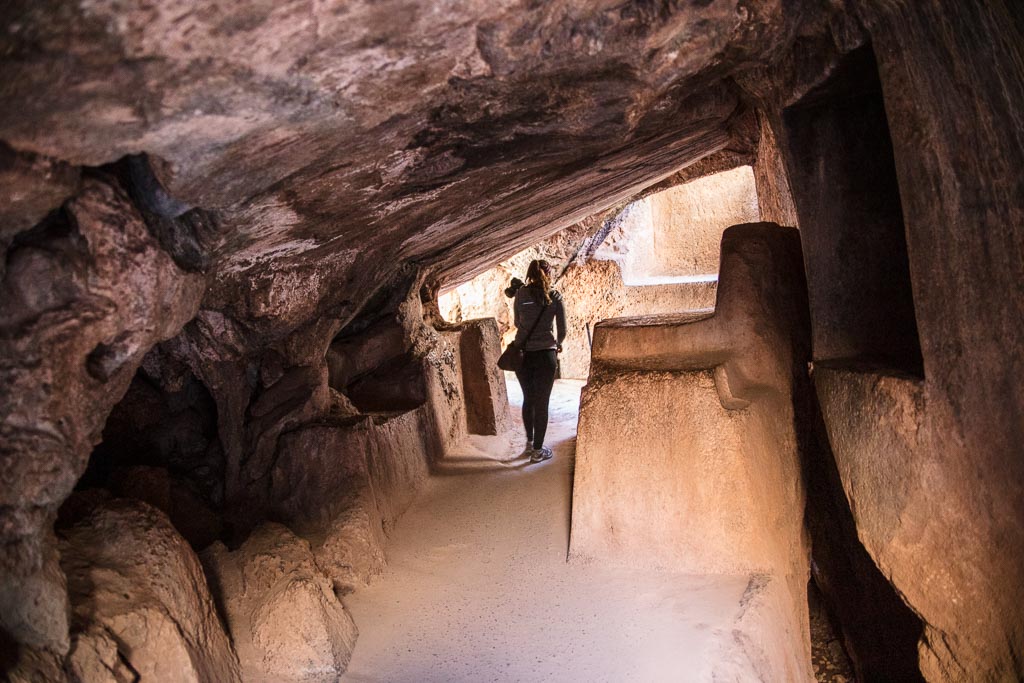
Stop #4: Christo Blanco
Not an Incan site per se, but you have to go past it to get to Sacsayhuaman. Christo Blanco in Spanish means- you guessed it: White Jesus. T
his of course is the big landmark you can see looming over Cusco on the nearby hill when you’re down in town. The Christo Blanco was a gift given to Peru by Palestinian refugees. From Christo Blanco you’ll have great views of Cusco.
When you’ve finished up peering down into Cusco just walk around front the statue and over a little hill and Sacsayhuaman will be in your view. It’s about another 1k walk, you can do it!
Stop #5: Sacsayhuaman
*Yes, Sacsayhuaman is pronounced like sexy-woman.
You’ve made it to the massive complex of Sacsayhuaman! Make sure and take the time to really observe the structure of the walls. These boulders all seem to be jigsawed together without mortar and so tightly together that you can’t even slide a piece of paper between them.
Sacsayhuaman actually pre-dates the Incas. Its believed to have been built by the Killke who were in the area prior to the Incas between 900 and 1200 AD. However, the Incas did continue to build onto the site well into the 1300s. It is disputed as to whether Sacsayhuaman was a fortress or a sun temple.
Inca’ed out yet for one day? Continue along the steep path back down towards the city, yay stairs!
Check out these 13 photos of Rainbow Mountain

Stop #6: Back to Cusco
Congrats, you’ve made it! Now get off those feet and go celebrate with a cerveza, cheers!
How much time do I need for the Tambomachay to Cusco Walk?
Well, this depends. While someone who is fascinated by archeology and the detail in Inca sites may need more than a day to see all these sites, someone who is more casually checking out the ancient sites may do this walk in 3 hours. Personally, we did this trek in about 6 hours on our self-guided tour.
Tips for the Tambomachay to Cusco walk
- Bring water, duh. But also water helps with altitude, Cusco sits at about 11,000 feet.
- Bring layers- Cusco can range from nice and warm to downright cold.
- Bring a snack/lunch- don’t worry if you forget, there are a couple of places to grab a bite to eat on the way down.
- Bring/wear sunscreen- With that thin O2 at these altitudes, sunburn can happen.
- A guidebook- You’ll see plenty of copies of Lonely Planet Peru being lugged around. My personal go-to is Bradt’s guidebooks, they make a guidebook specifically on Cusco, Machu Picchu, and the Sacred Valley which can prove immensely helpful here. Another great is Exploring Cusco by Peter Frost (you can also pick one up in Cusco bookstores).
- Small change- to pay for the bus and the whatnot.
Where to stay in Cusco for cheap (or not!)
Ecopackers Hostel | Booking.com | Hotels.com |
El Mariscal | Booking.com | Hotels.com |
Gettin’ bougie
Costa Del Sol Ramada Cusco | Booking.com | Hotels.com |
Holy schnikes
Inkaterra La Casona | Booking.com | Hotels.com |
More Posts from Peru:
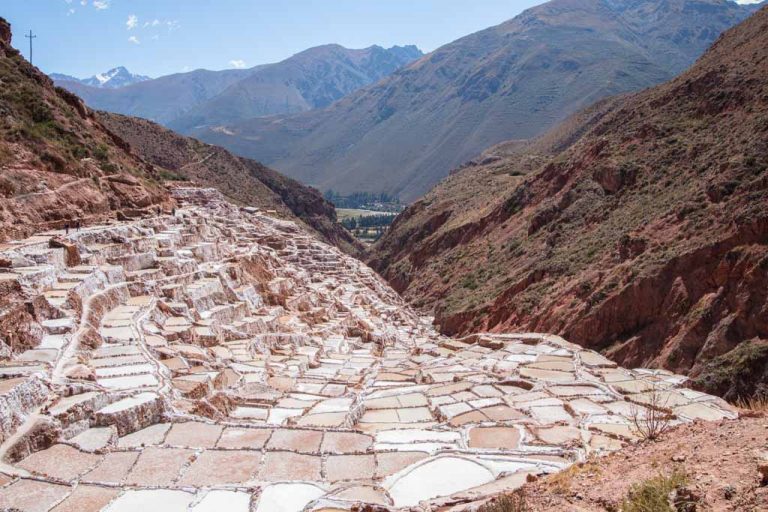
Visiting The Incredible Maras Salt Mines, Peru
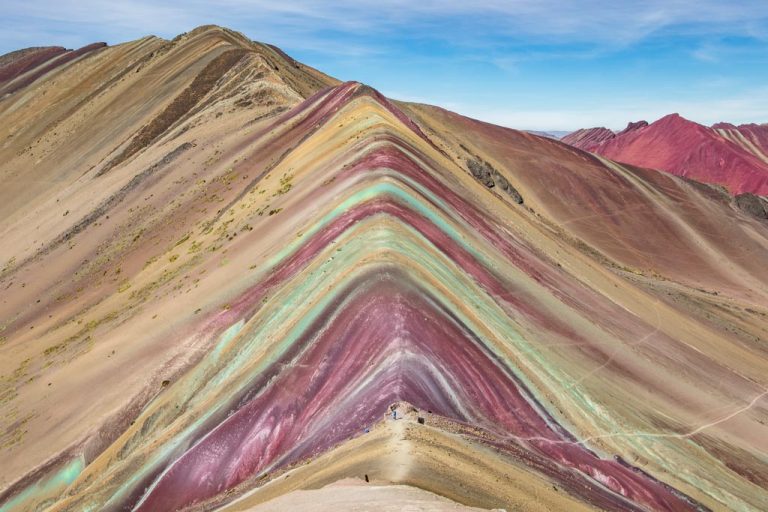
Rainbow Mountain Peru with Flashpacker Connect
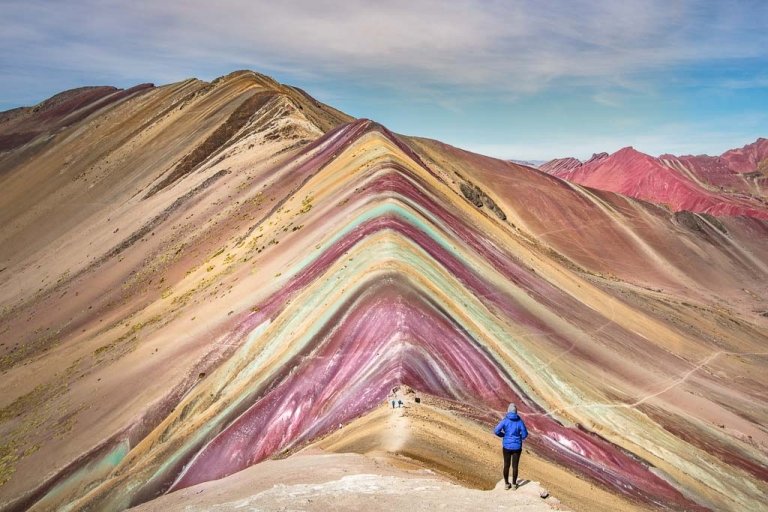
Tips for Hiking Rainbow Mountain
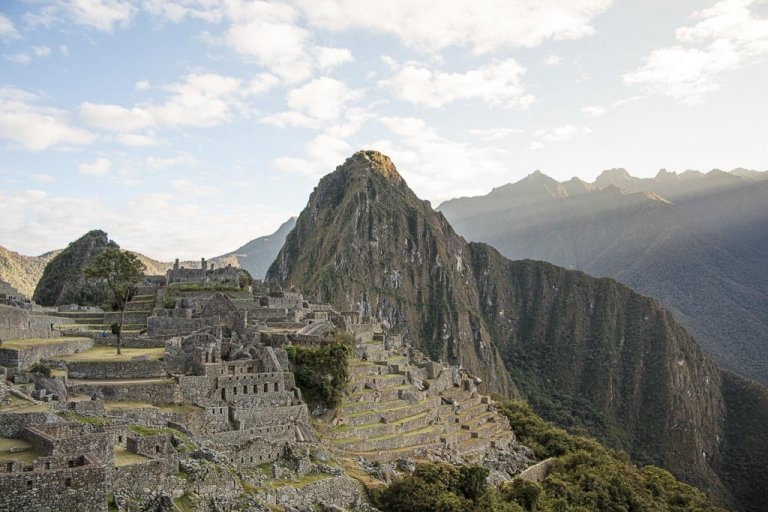
What You Need To Know To Visit Machu Picchu In 2024

13 Photos That Will Put The Rainbow Mountain On Your Bucketlist

Tambomachay to Cusco Walk
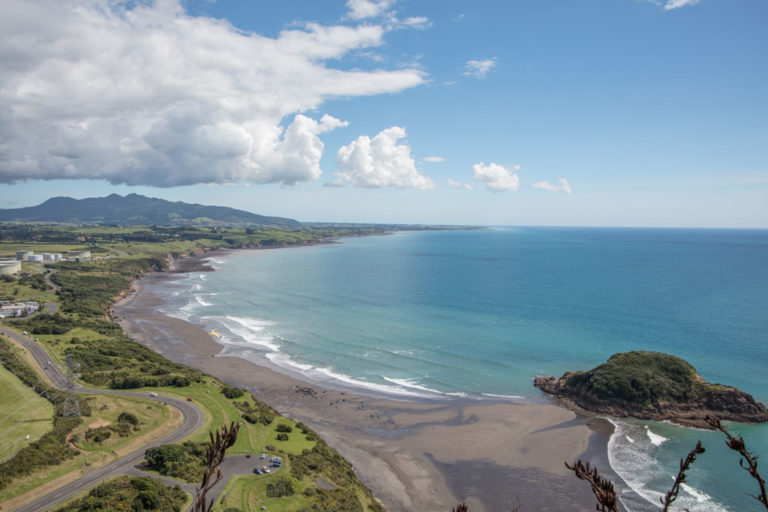
The Best Road Trips In The World
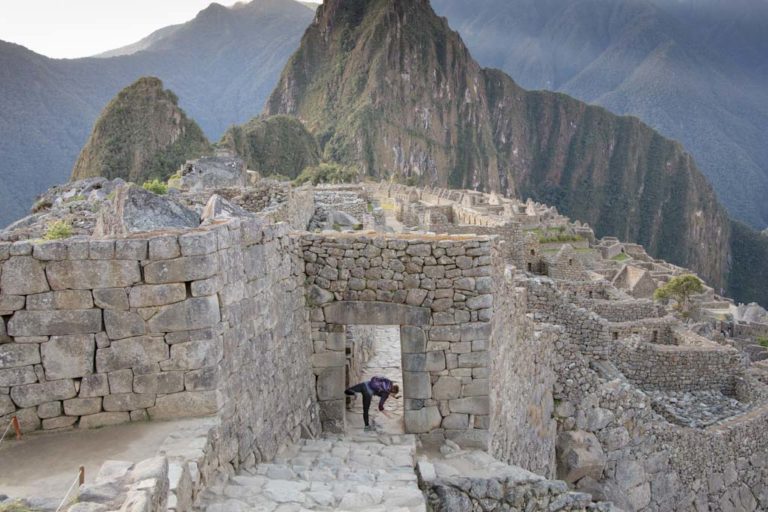
The Most Hilarious, Worst Travel Day Ever: Nicole Gets In A Train Wreck
1 thought on “tambomachay to cusco walk”.
This is a part of a small group of Inca ruins located along the Inca Trail. This was used as a resting point along the trail fort he Inca noble, priests, and royalty. It is not too far away from Cusco, Peru so you can see a few of these archaeological zones on a short day trip.
Leave a Comment Cancel Reply
Your email address will not be published. Required fields are marked *
Notify me of followup comments via e-mail. You can also subscribe without commenting.
This site uses Akismet to reduce spam. Learn how your comment data is processed .
Tambomachay Information
Published by peru explorer on december 16, 2019 december 16, 2019.
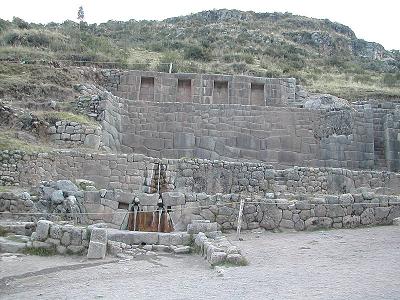
Related Posts

Discover Peru’s Top Travel Destinations
Explore Peru's stunning landscapes, ancient ruins, and vibrant culture. From Machu Picchu to the Amazon, discover the best places to travel in Peru for an unforgettable adventure.

Comprehensive Peru Tours
Discover peru: plan your exciting adventure today.
Embark on a trip to Peru and uncover ancient wonders, vibrant culture, and breathtaking landscapes. From Machu Picchu to the Amazon, plan your unforgettable adventure today!

Getting around
Discover peru: your ultimate visitor guide.
Explore Peru's wonders with our comprehensive visitor guide. Uncover ancient ruins, vibrant culture, and breathtaking landscapes. Plan your unforgettable Peruvian adventure today!

IMAGES
VIDEO
COMMENTS
Tambomachay, an archaeological center that is believed to have played an important religious function related to water and the regeneration of the land. The Archaeological Site of Tambomachay is also known as the Baths of the Inca. The archaeological site of Tambomachay was a place dedicated to the water worship and as a resting place for the ...
Operating Hours and Entrance Fee at Tambomachay. Tambomachay is open from Monday to Sunday, from 8:00 a.m. to 6:00 p.m. During these hours, visitors have the opportunity to explore and marvel at the Incan structures on-site. Regarding the entrance fee, it's important to mention that there's a differentiated rate for national and foreign ...
The Tambomachay archaeological complex lies between hills covered with "Ichu," a type of grass endemic to the region. Beautiful flowers also appear during certain seasons. How to Get to Tambomachay. There are three transportation options to get to Tambomachay: a 45-minute taxi ride; public transportation/bus; advanced booking with a tour ...
Visit Adventures. Trips Highlight ... Tambomachay is located just off the Carretera 28G that winds its way out of Cusco and up towards a number of important archaeological sites including ...
Tambomachay's weather is cool and mild, typical of its high altitude. The region has a summer from December to March, when frequent showers make the trails slippery, and winter from June to September, which is the dry season. In this season, you will find clear skies and pleasant temperatures. Best Time to Visit Tambomachay
Most travel companies include Tambomachay in their city tour programs. Prices are usually reasonable, but be cautious of excessively low rates. The typical itinerary starts around 9:00 AM or 1:00 PM, visiting places like the Santo Domingo Convent (or Qorikancha), the Cathedral, and then heading out of the city to Tambomachay, Pukapukara, Qenko ...
Tambomachay or Tampumachay as some Quechuologists prefer to call it, along with other attractions such as Pukapukara, Qenko and the white Christ are part of the archaeological center of Saqsaywaman, and one of the best preserved archaeological sites in Cusco, so it is an essential part of the tourist visits that take place in the famous City tour of the city.
Guided Tours: Many travel agencies in Cusco offer guided tours to Tambomachay, often including it as part of a larger itinerary covering multiple nearby Incan sites. Best Time to Visit. Seasonal Considerations: The best time to visit Tambomachay is during the dry season, from May to September. During this period, the weather is more favorable ...
Tambomachay is located on a hilltop, 8 kilometers away from the city of Cusco. It is part of the archeological circuit of the Imperial City, composed of three more archeological sites. To visit the so-called Inca Bath, one must acquire the Tourist Ticket, which offers the entrance to different prehispanic sites in the outskirts of Cusco.
Tambomachay [1] (possibly from Quechua tampu inn, guest house, mach'ay cave, or machay drunkenness, to get drunk or "spindle with thread") [2] [3] is an archaeological site associated with the Inca Empire, located near Cusco, Peru.An alternate Spanish name is El Baño del Inca ("the bath of the Inca").. It consists of a series of aqueducts, canals and waterfalls that run through the terraced ...
Tambomachay is located about 8km's (5 Miles) from the centre of Cusco, and is situated on the road from Cusco to Pisac. ... Unless you plan on hiking back to Cusco you will need to ask the taxi to wait for you whilst you visit. A local taxi will charge S/. 35 - 50 (US$ 13 - 18) for a round trip. A private taxi arranged by your hotel ...
Tips for your visit. Tambomachay sits at 3,700 meters above sea level (12,139 feet elevation). At that altitude, tourists can feel some of the symptoms of altitude sickness such as: fatigue, nausea and excessive agitation when doing physical activity. These discomforts usually disappear gradually when the body acclimates to the new mountain ...
Visit all the highlights and landmarks, including Tambomachay, Puccpucara, Quenqo, Sacsayuaman, and Koricancha. Hotel pickup in the historic center of Cusco available; travel via air-conditioned coach. ... Check out the Inca sites at Tambomachay, Sacsayhuaman, Puka Pucara and Qenqo during your ride, learning about the history of this ancient ...
In the heart of the Andes, Tambomachay stands prominently, echoing tales of the Inca civilization's spiritual practices. [email protected] +51 908 883 958; Machu Picchu Circuits; ... For those who truly wish to immerse themselves in Inca traditions and spirituality, a visit to Tamboachay is a must. Allow the waters to share their ...
After Tambomachay, visit the Pisac Indian Market, one of the most popular and picturesque of the indigenous markets in the Cusco region. Travelers from all over the world make the pilgrimage to this mountain town to purchase all manner of textiles, ceramics, jewelry, ponchos, rugs, hats, gloves, Andean instruments, ceramics, alpaca and llama ...
The Tambomachay entrance fee is included in the Tourist Ticket of Cusco. You can visit this site in the Schedule of Monday to Sunday from 7:00 a.m. to 6:00 p.m. Tambomachay Altitude. Tambomachay Cusco is located on the side of a hill on the Tambomachay River, the Tambomachay altitude is 3700 masl.
The Tambomachay ruins are another great place to visit while you are in the Peruvian highlands. This Inca construction is located near the city of Cusco and is the perfect destination for anyone spending a few days in the Inca city who is looking to do a little exploring. The Tambomachay ruins added to the Machu Picchu hike and other ruins like ...
Tips for the Tambomachay to Cusco walk. Bring water, duh. But also water helps with altitude, Cusco sits at about 11,000 feet. Bring layers- Cusco can range from nice and warm to downright cold. Bring a snack/lunch- don't worry if you forget, there are a couple of places to grab a bite to eat on the way down.
TAMBOMACHAY.- Located 7km from Cusco at 3,700 meters above sea level, this site was popularly known as the "Inca's Baths". Researchers believe Tambomachay was an important center of worship of water. It is an archaeological complex made up of well-crafted canals, walls and windows which show the Incas' extraordinary architectural talents and their in-depth knowledge
Map of Russia with Omsk Oblast highlighted. This is a list of rural localities in Omsk Oblast.Omsk Oblast (Russian: О́мская о́бласть, Omskaya oblast) is a federal subject of Russia (an oblast), located in southwestern Siberia.The oblast has an area of 139,700 square kilometers (53,900 sq mi). Its population is 1,977,665 (2010 Census) with the majority, 1.15 million, living in ...
THE 30 BEST Places to Visit in Omsk (UPDATED 2024)
Within the framework of administrative divisions, Isilkul serves as the administrative center of Isilkulsky District, even though it is not a part of it. [1] As an administrative division, it is incorporated separately as the town of oblast significance of Isilkul—an administrative unit with the status equal to that of the districts. [1] As a municipal division, the town of oblast ...
Visit Isilkul. Check Isilkul hotel availability. Check prices in Isilkul for tonight, Aug 23 - Aug 24. Tonight. Aug 23 - Aug 24. Check prices in Isilkul for tomorrow night, Aug 24 - Aug 25. Tomorrow night. Aug 24 - Aug 25. Check prices in Isilkul for this weekend, Aug 23 - Aug 25. This weekend. Aug 23 - Aug 25. Cities near Isilkul;